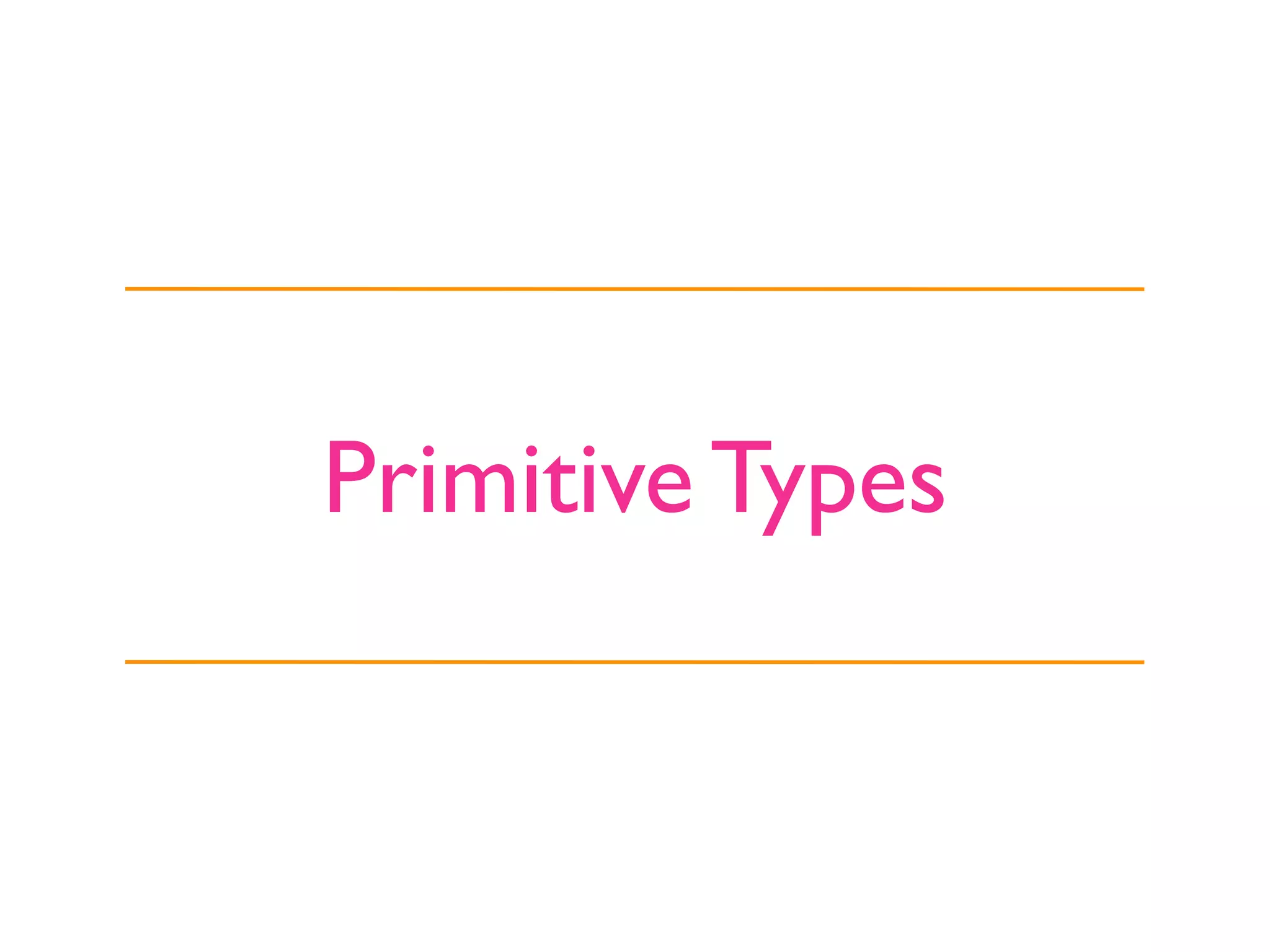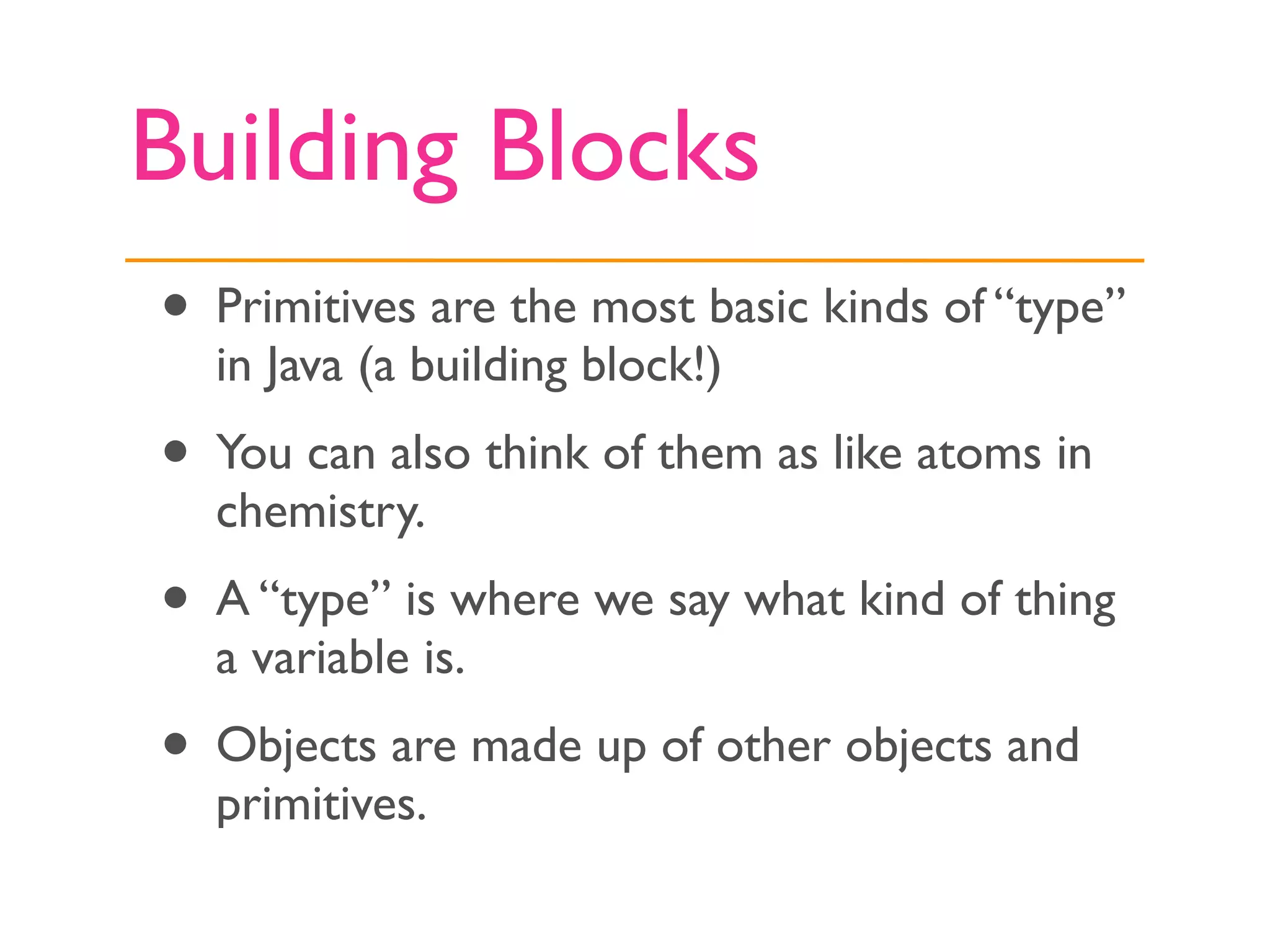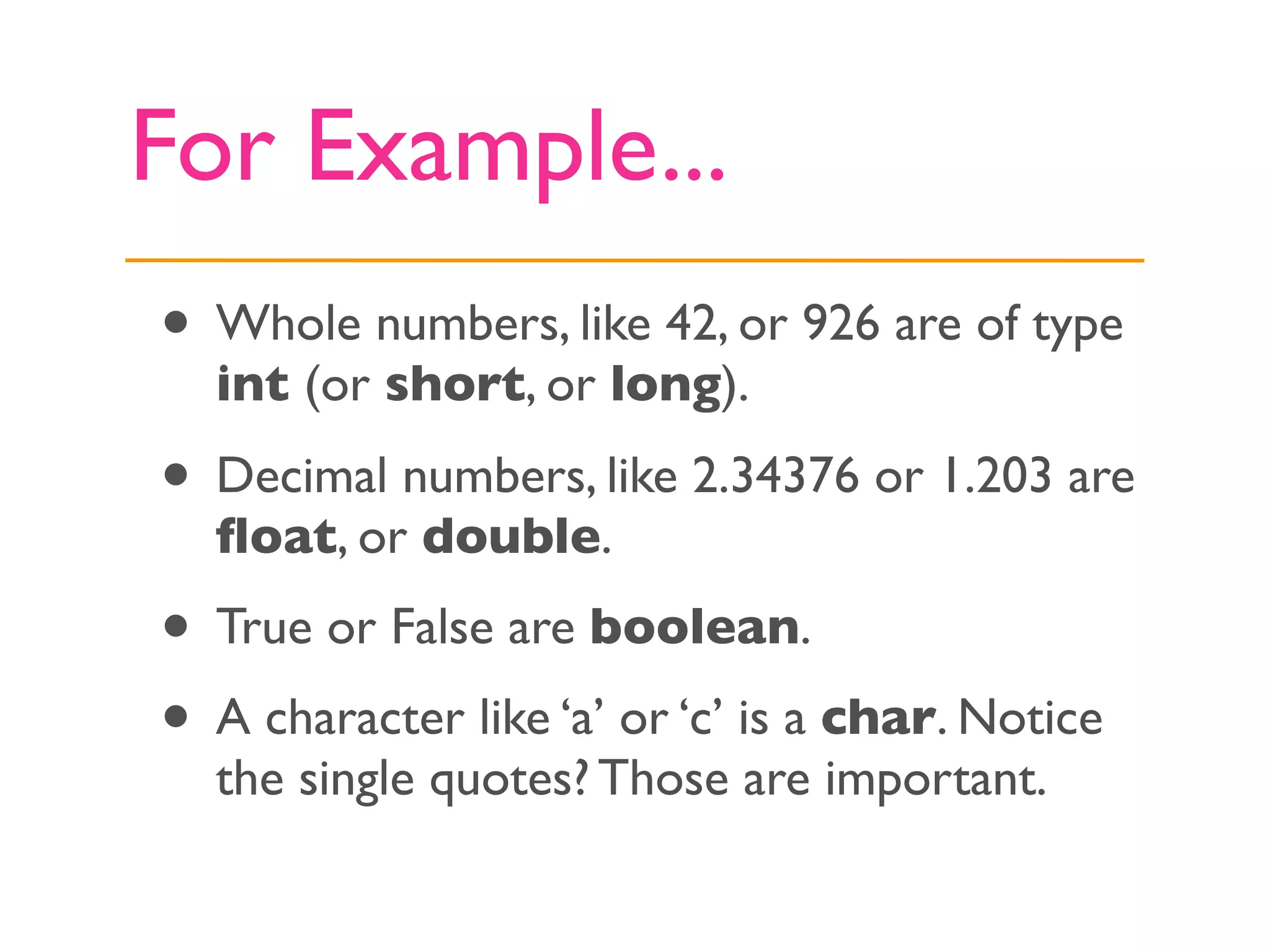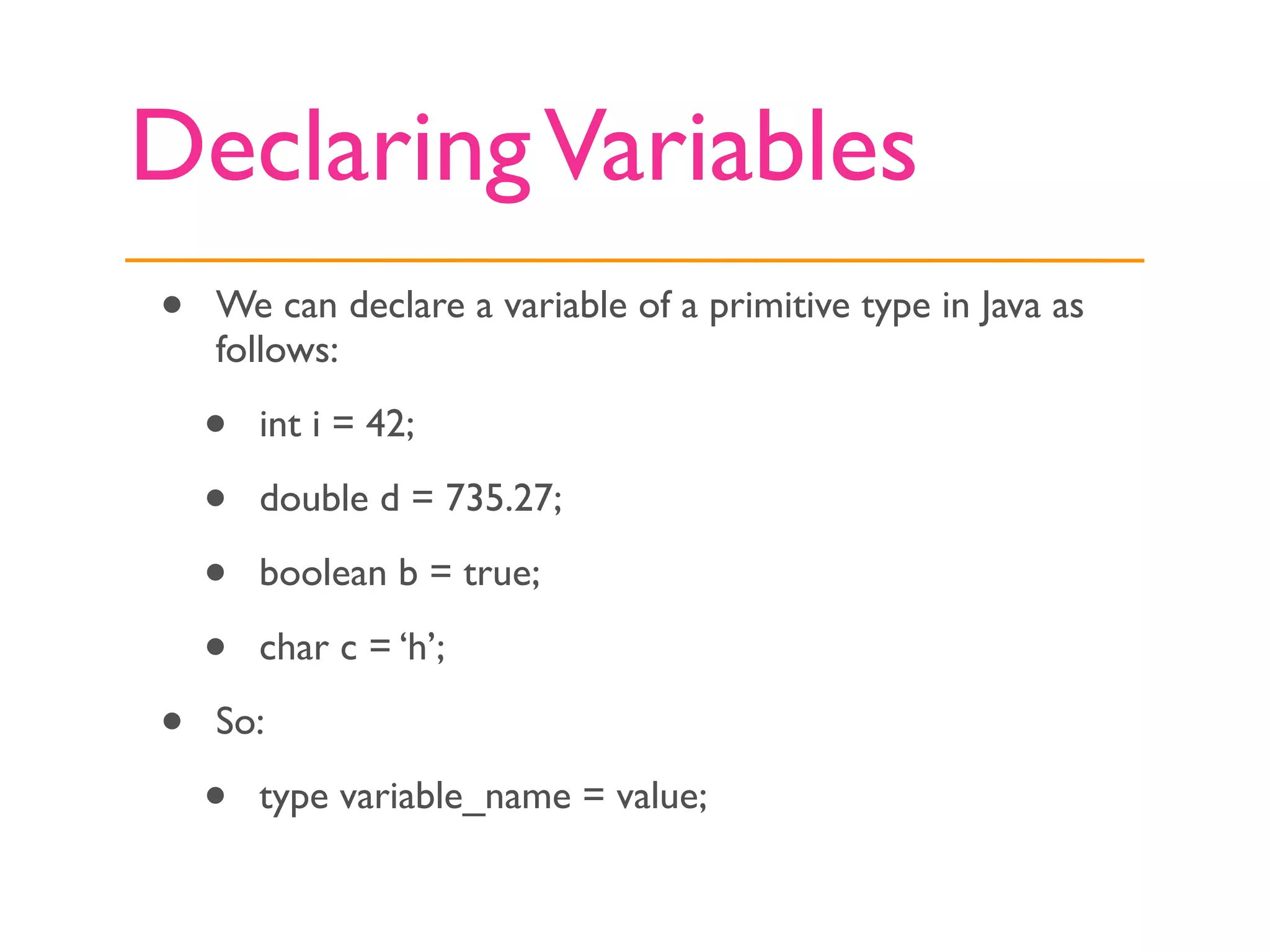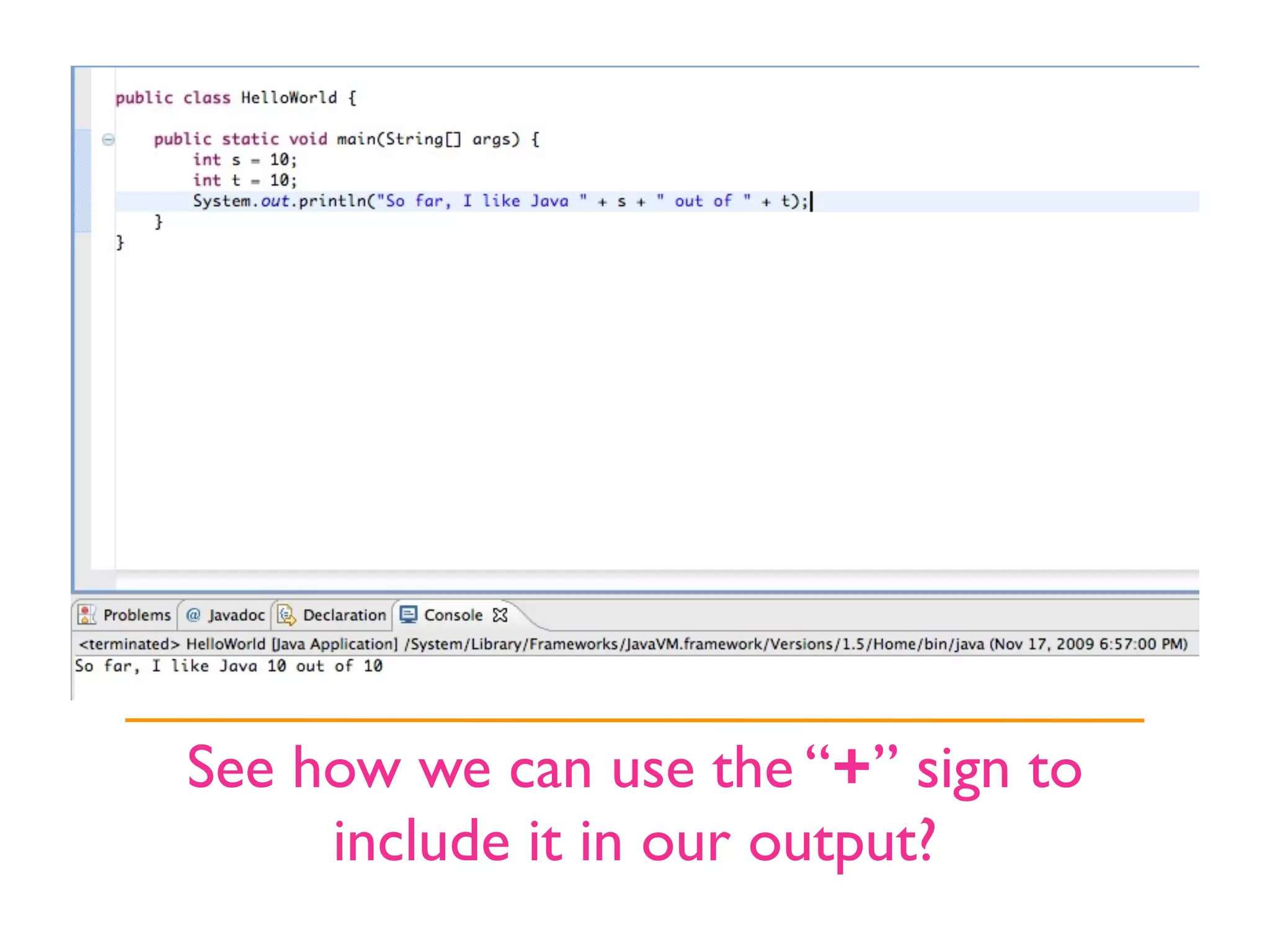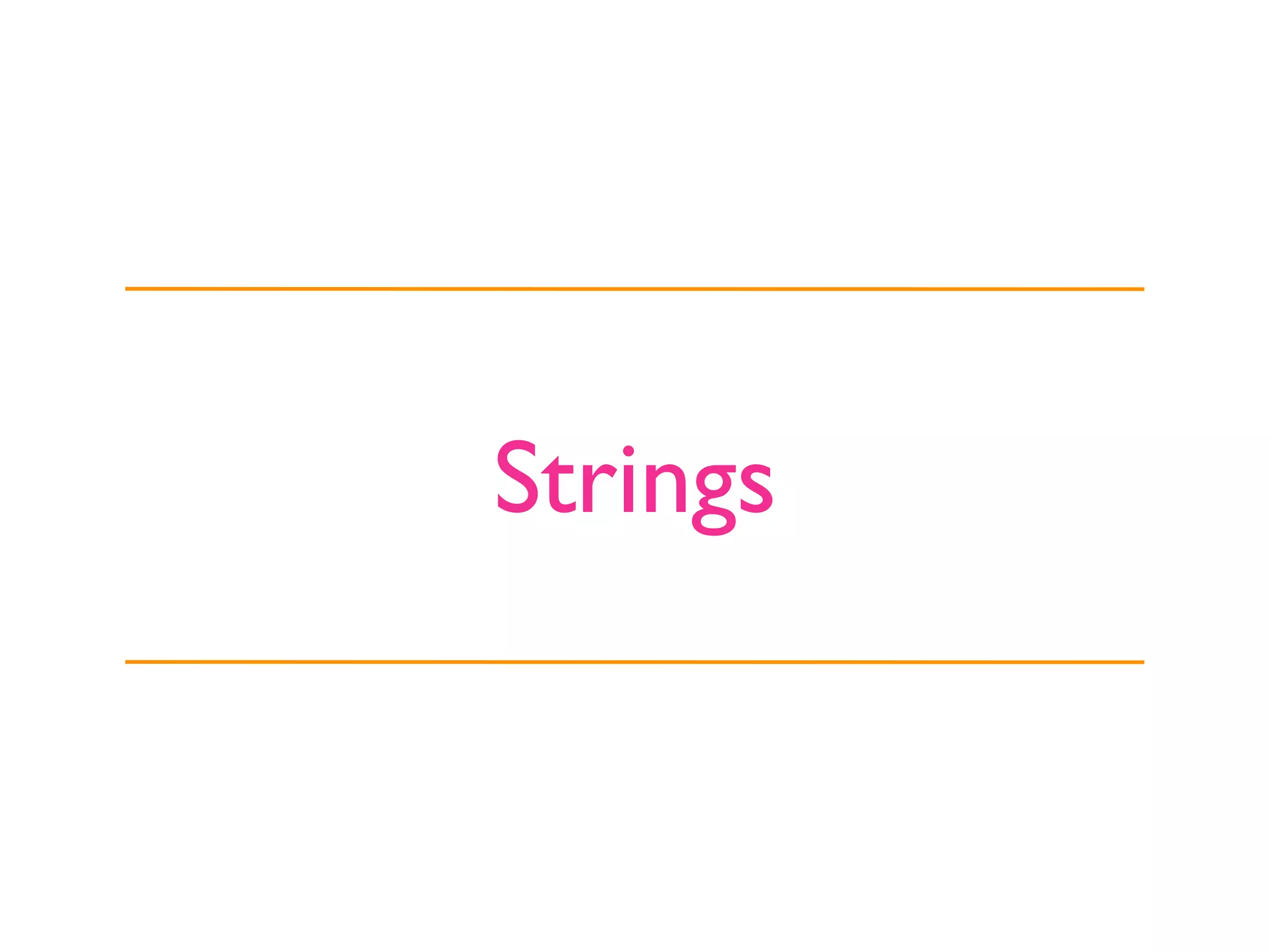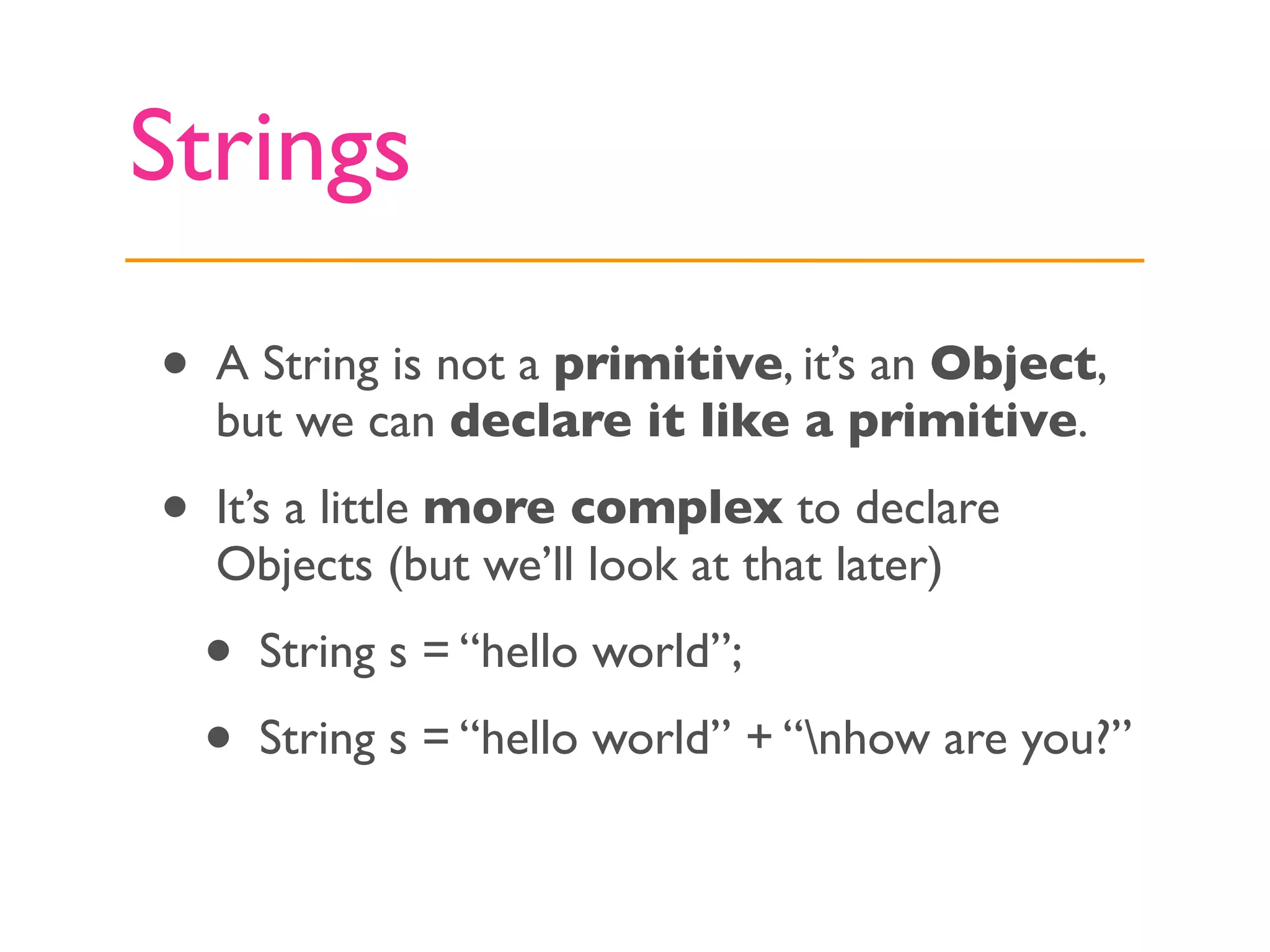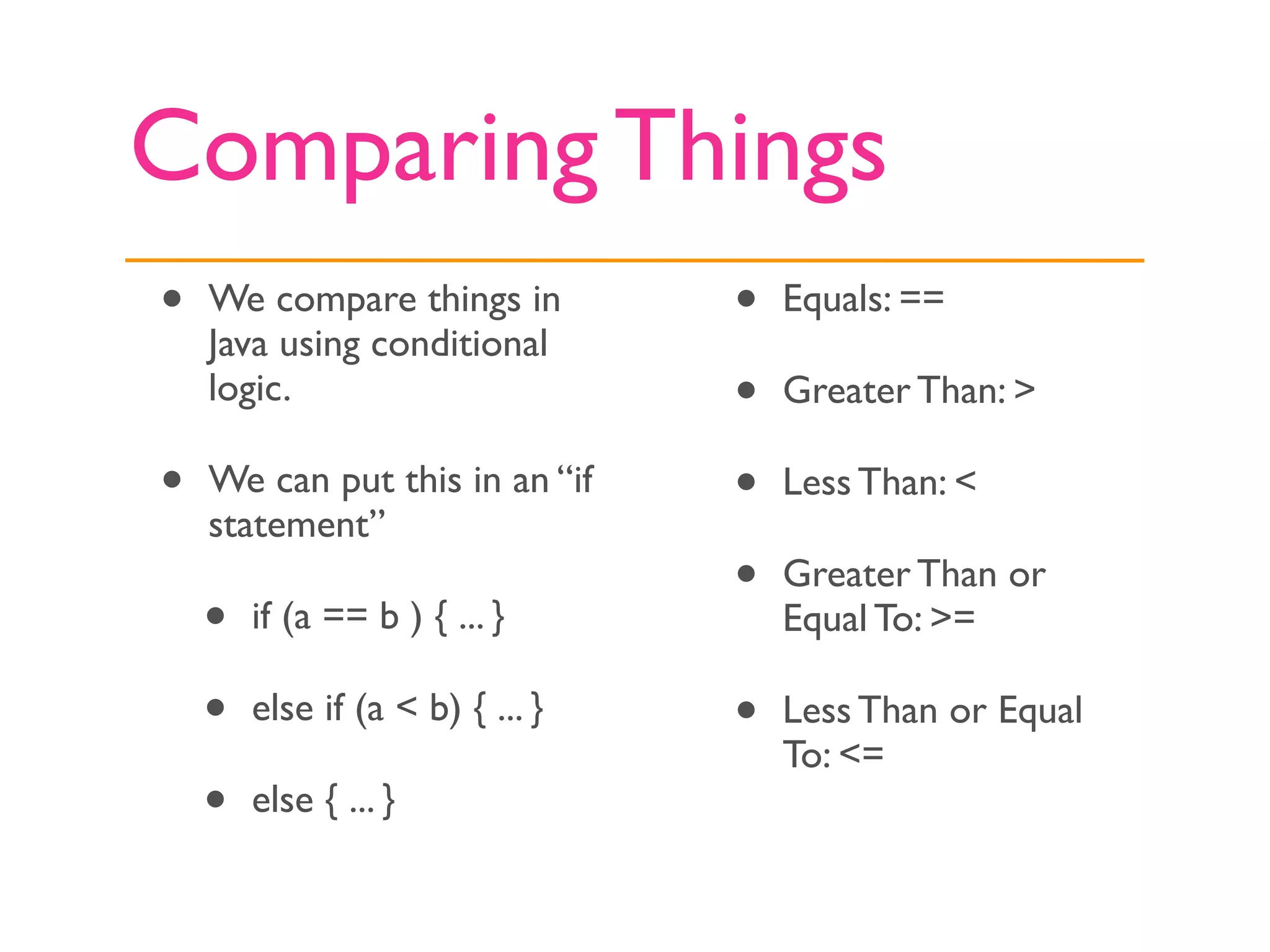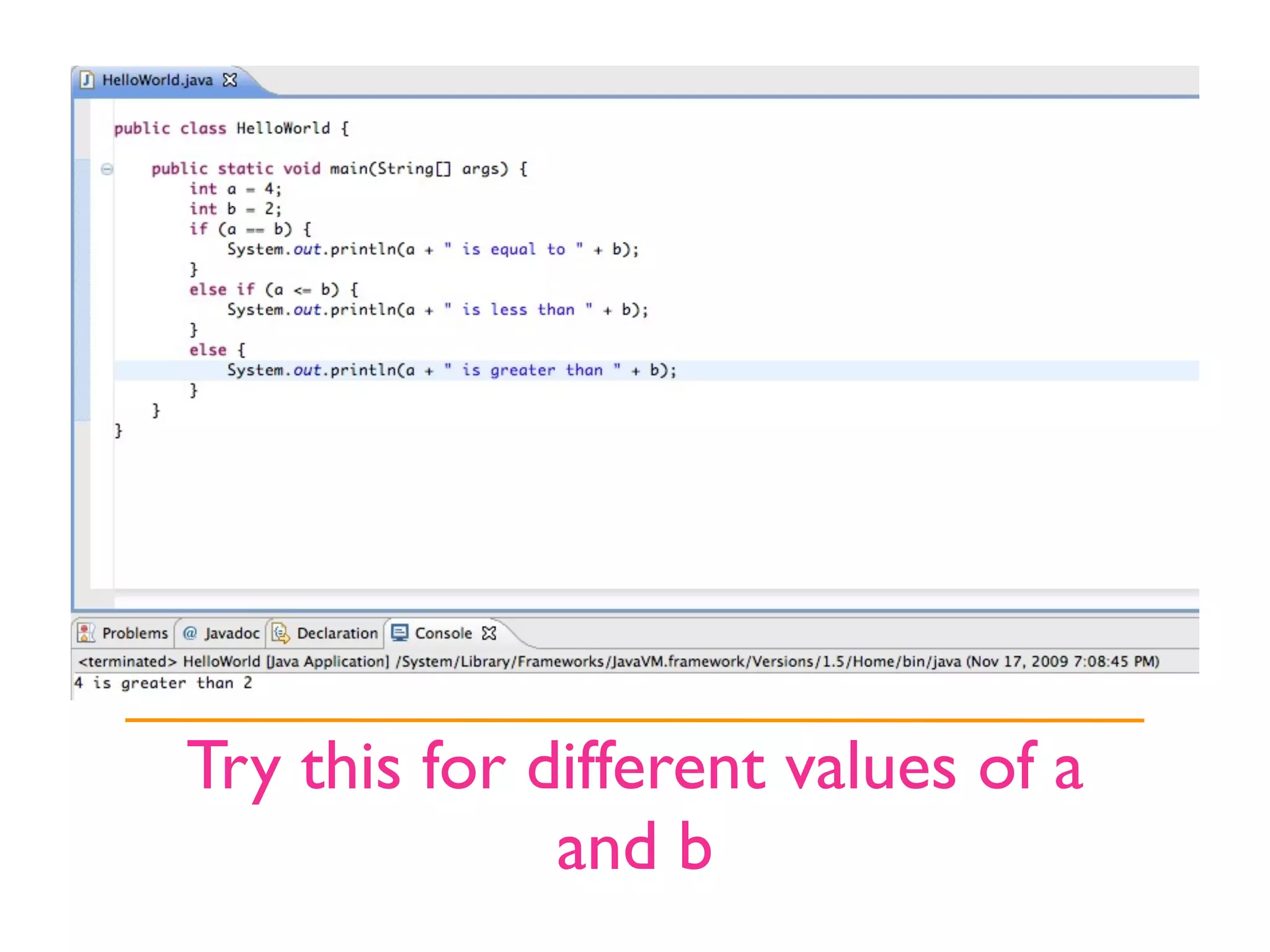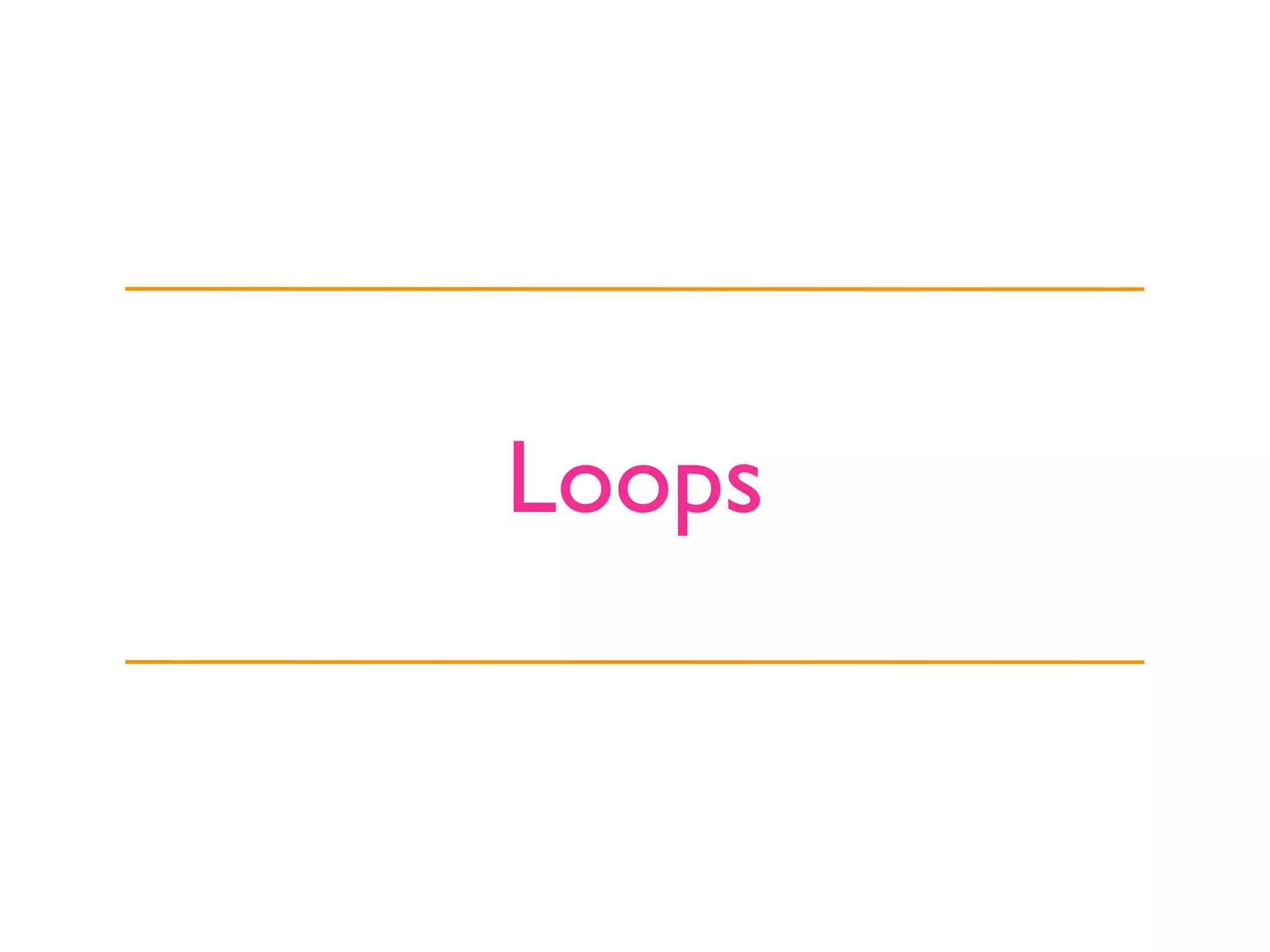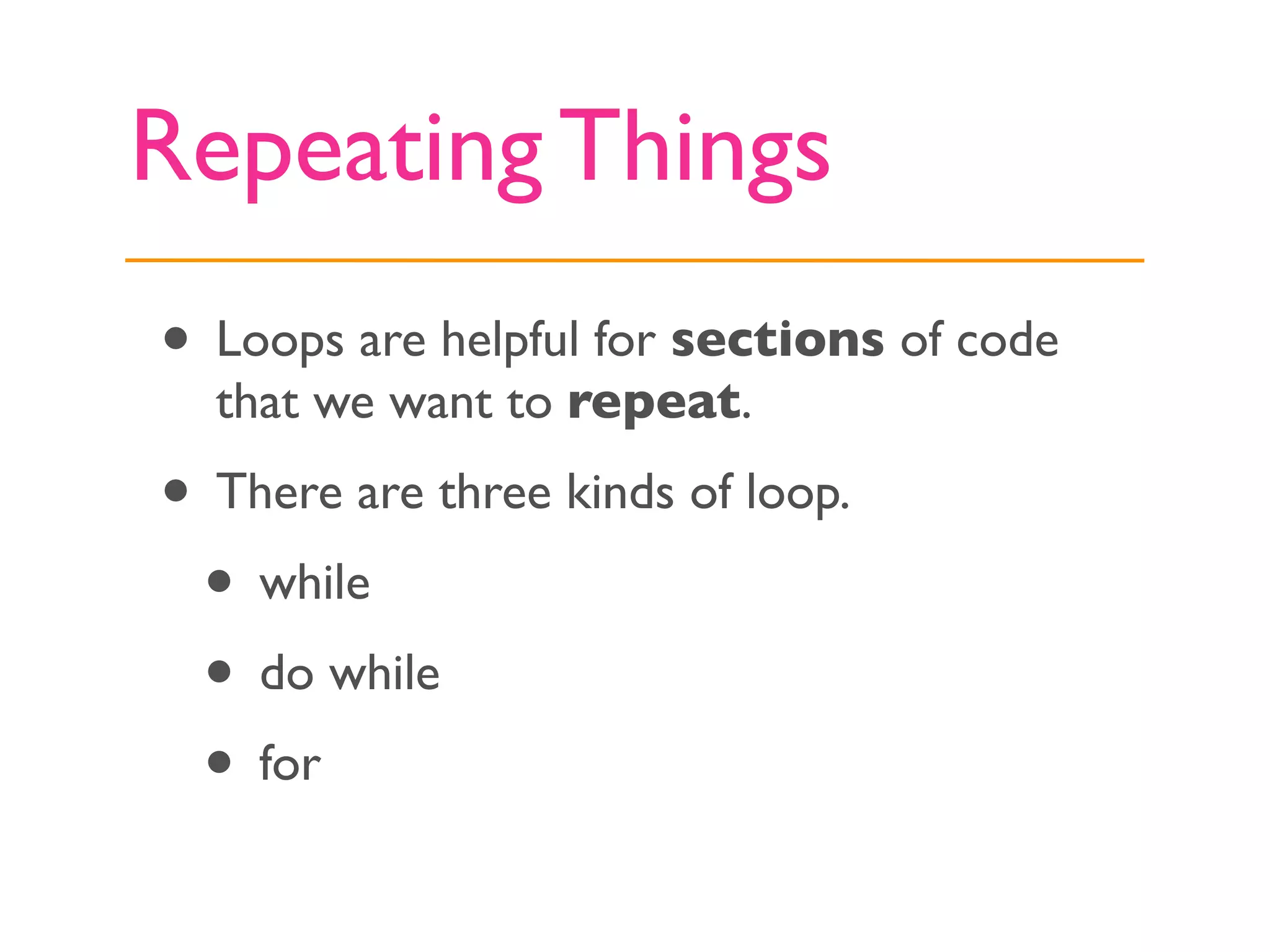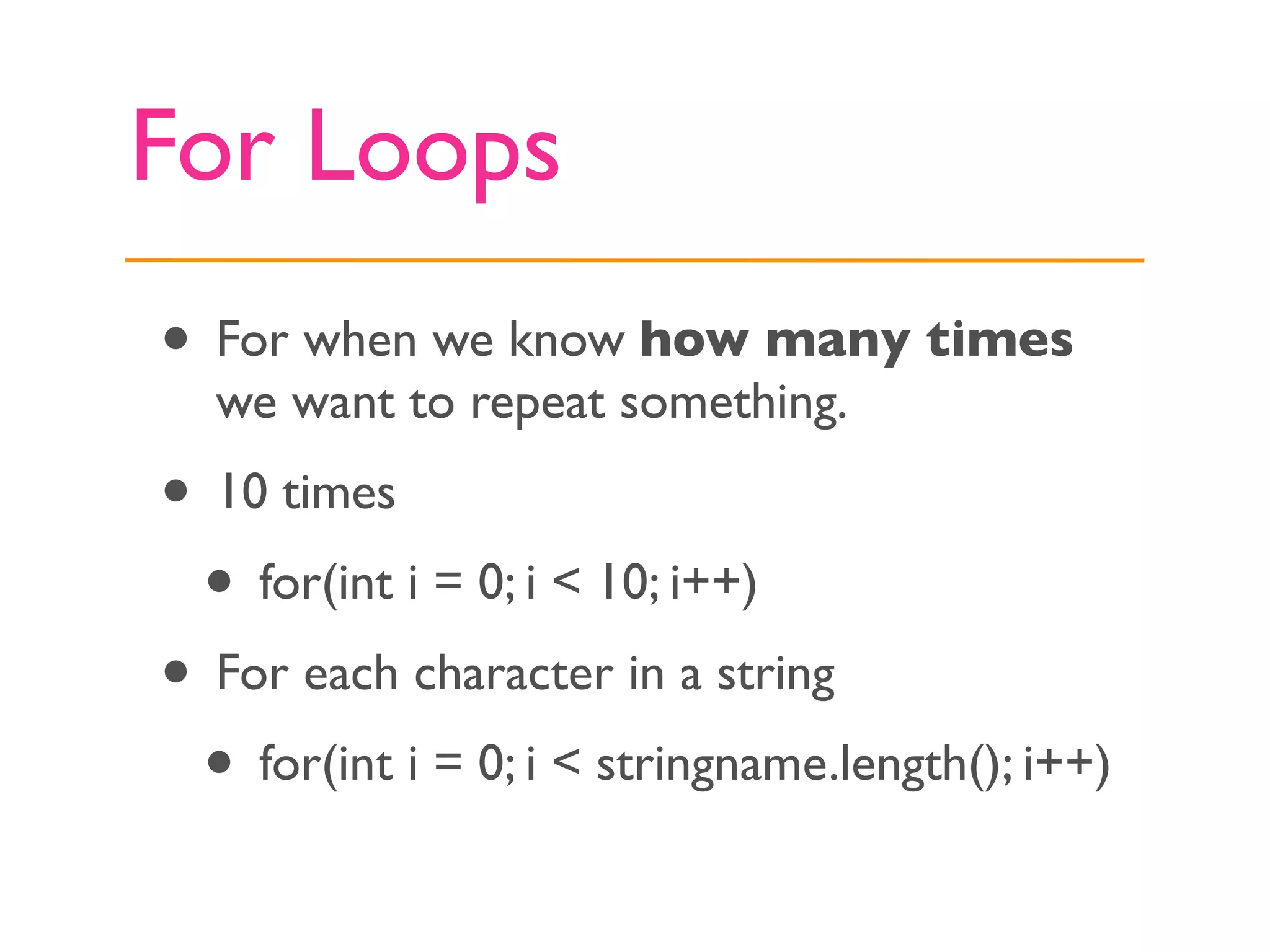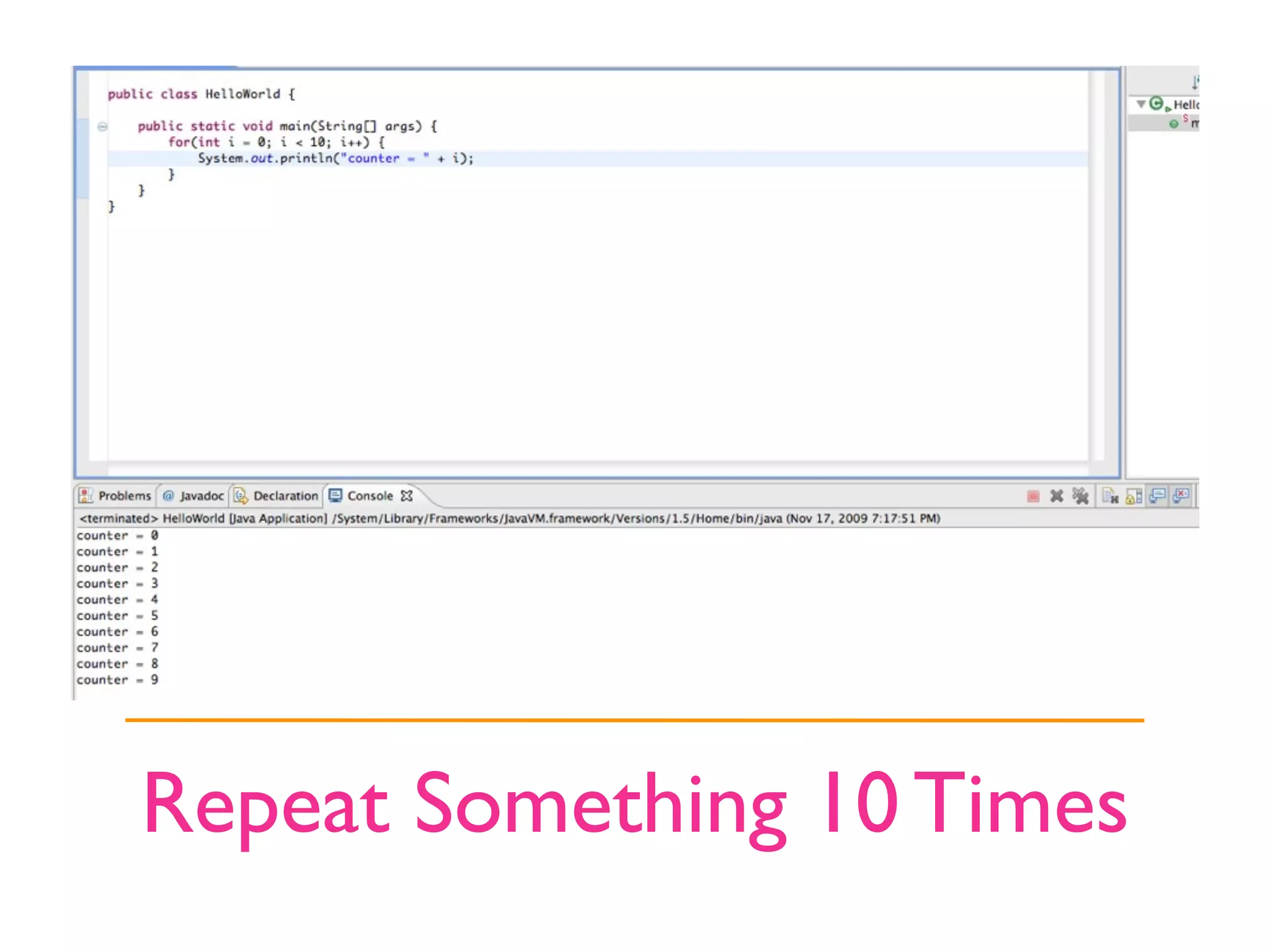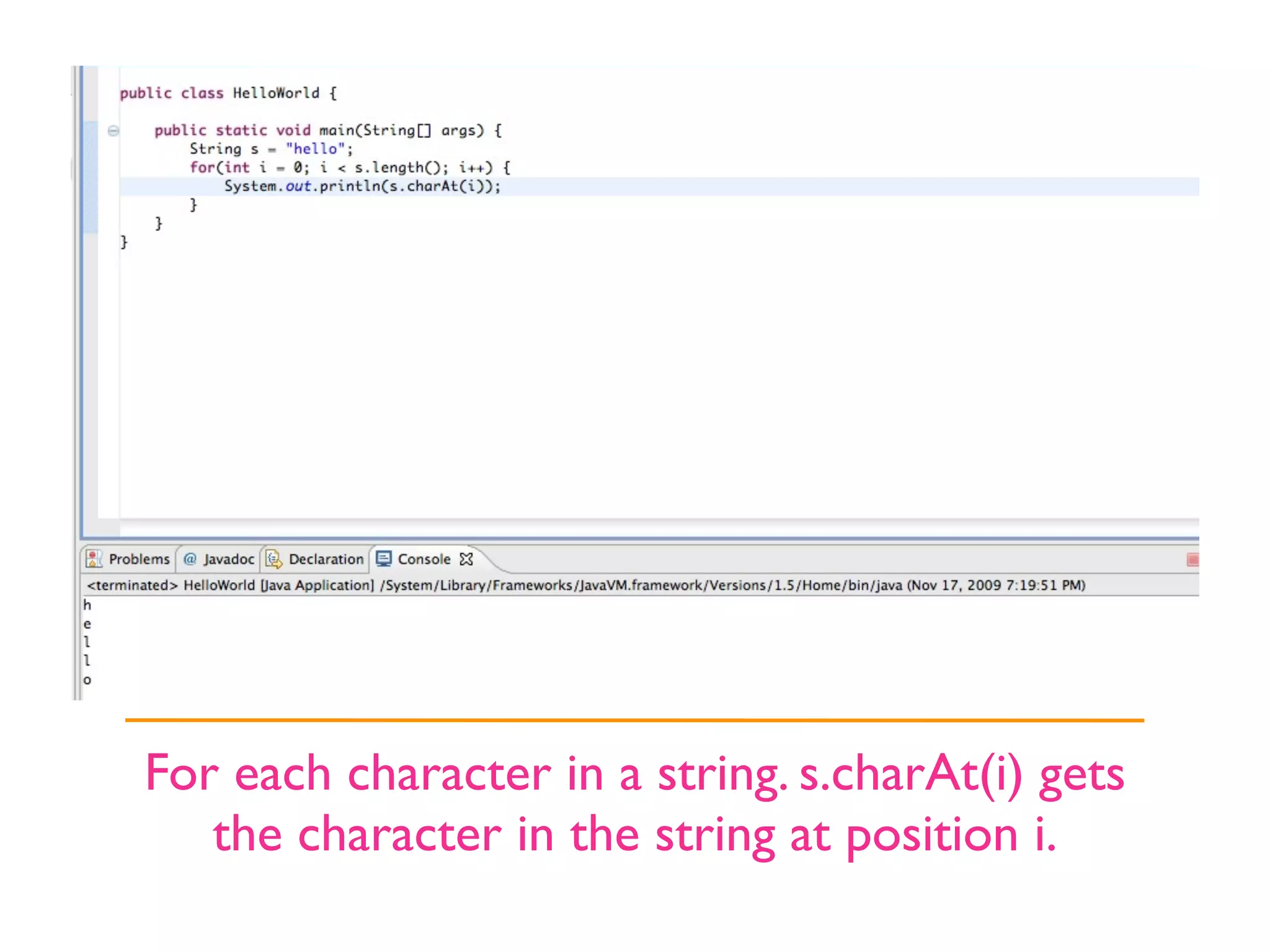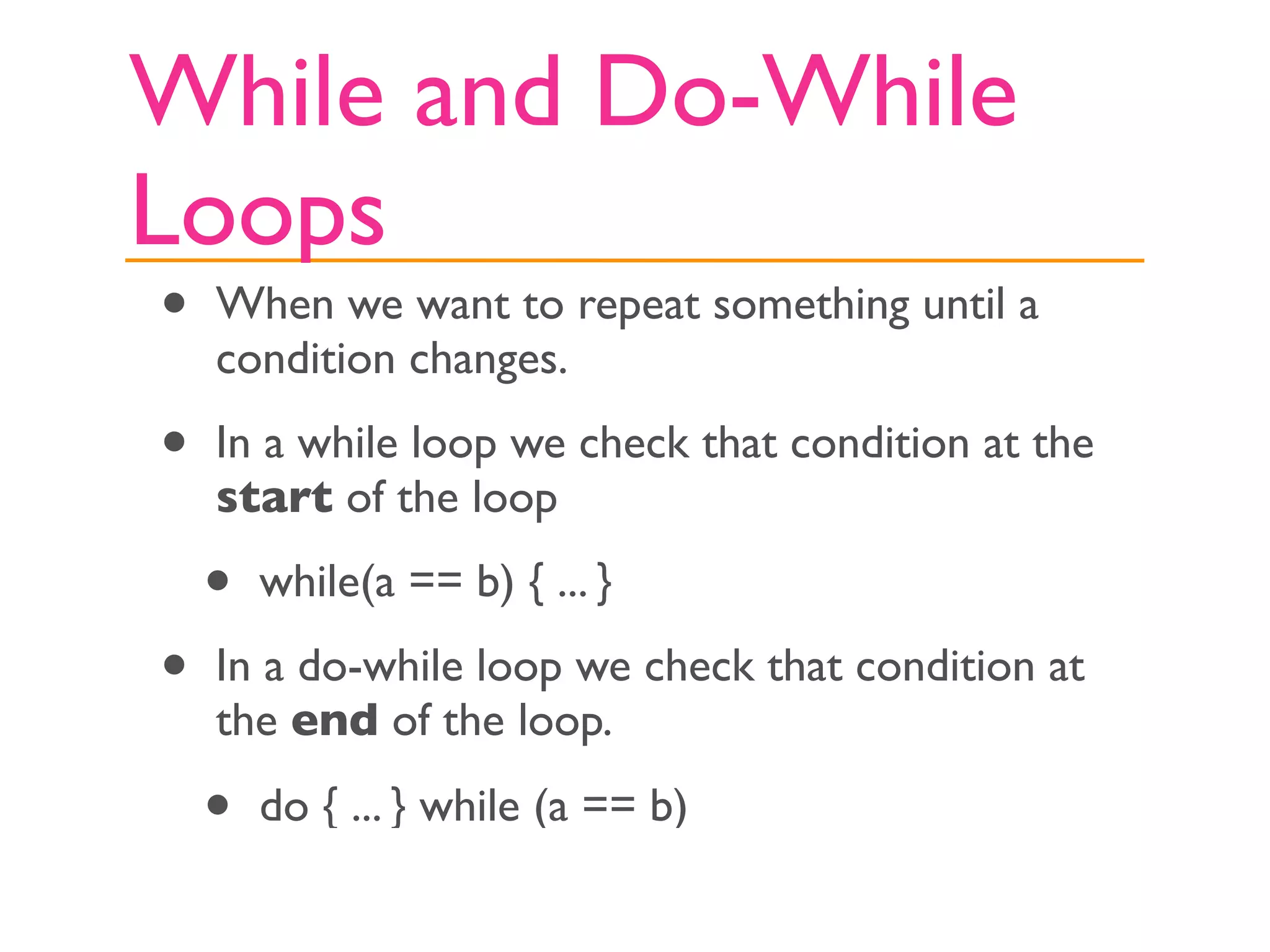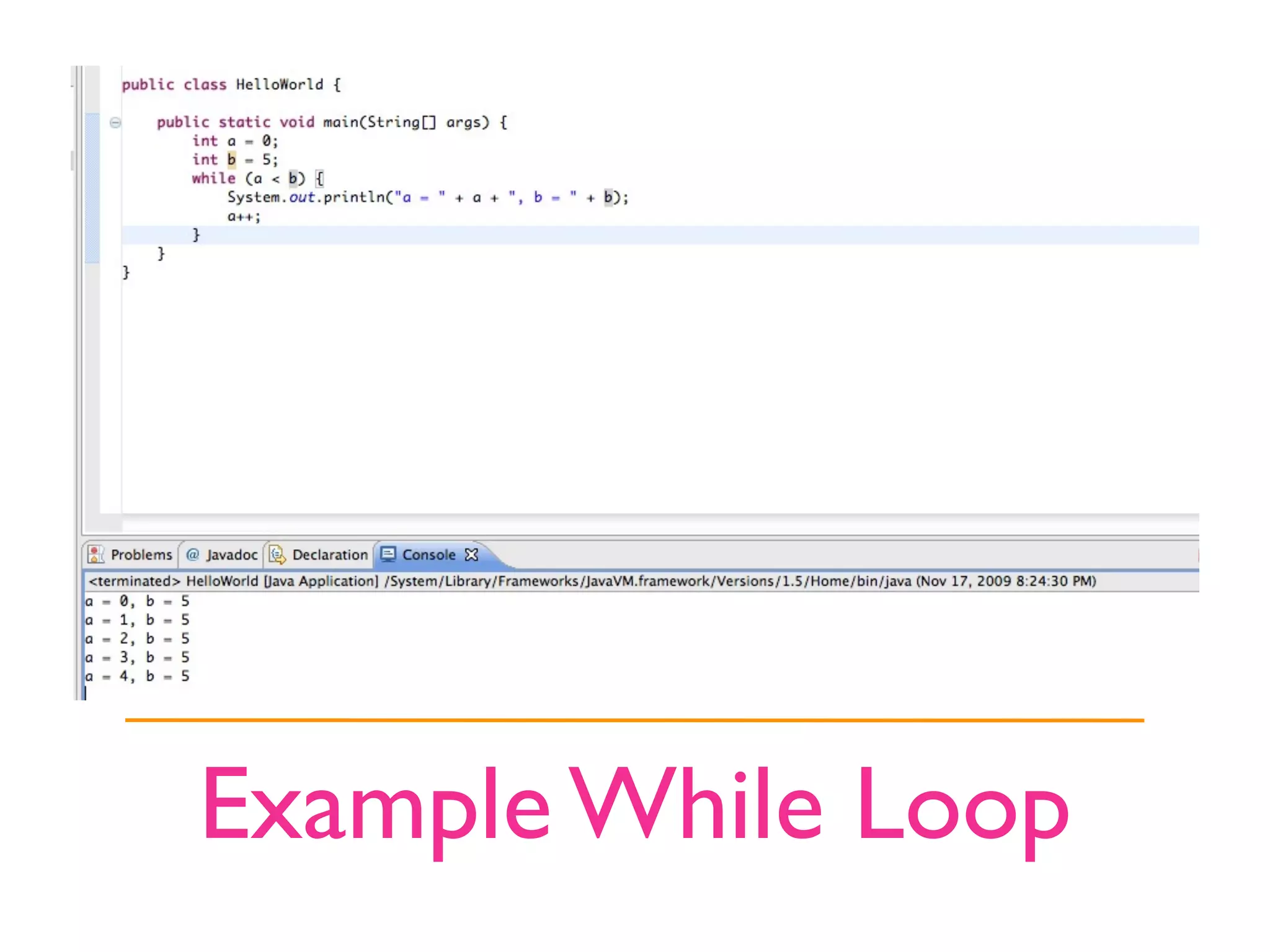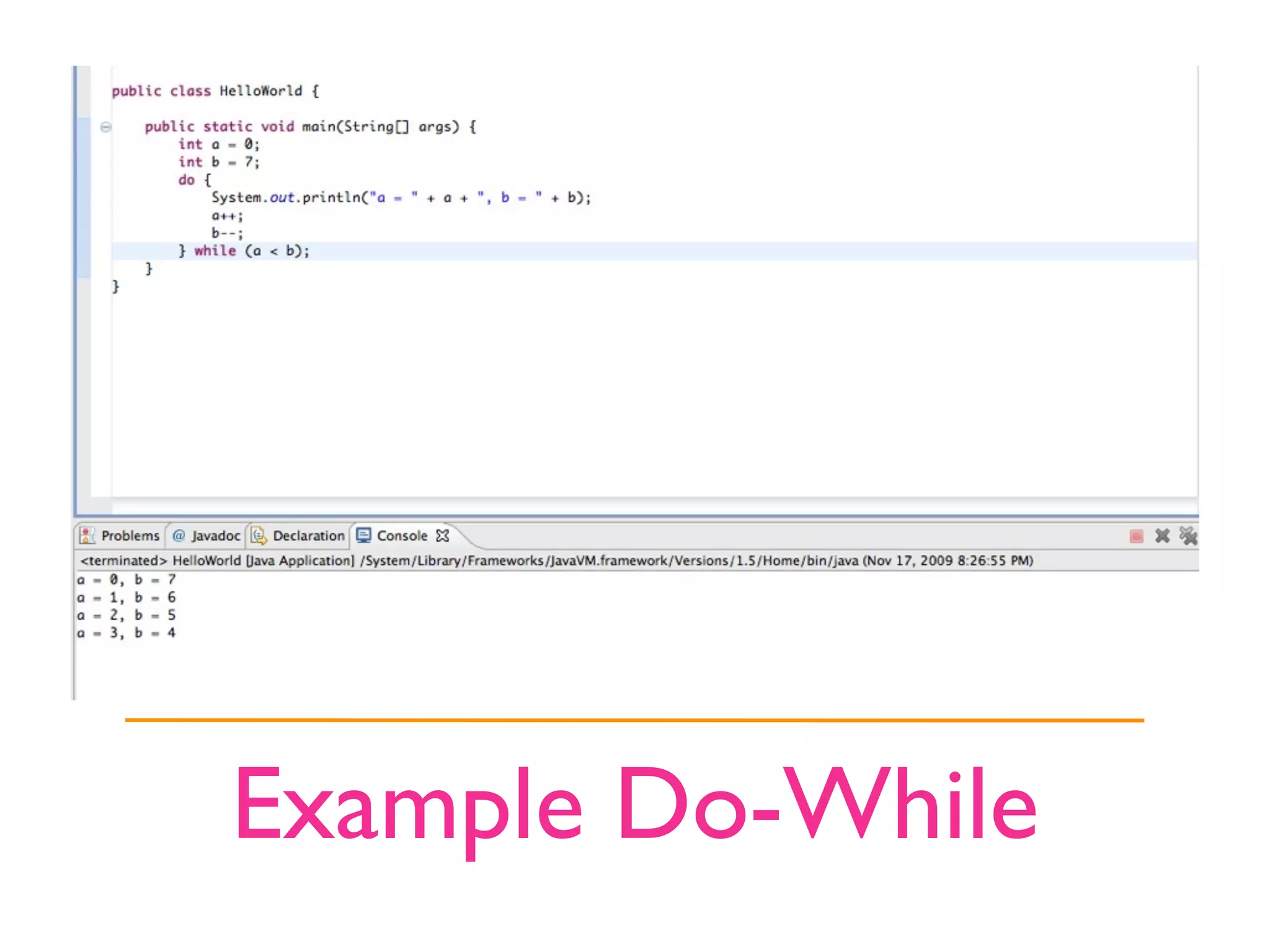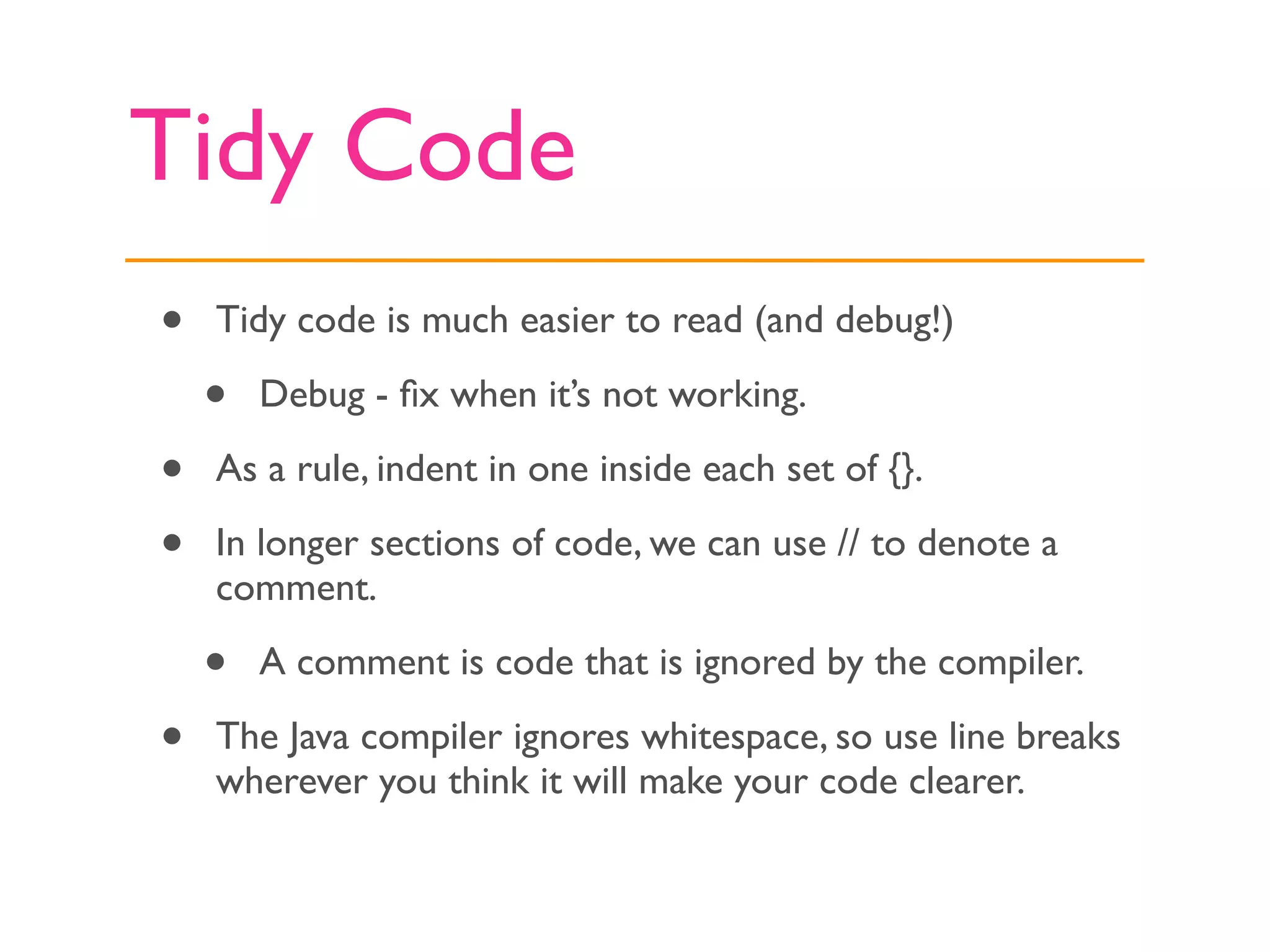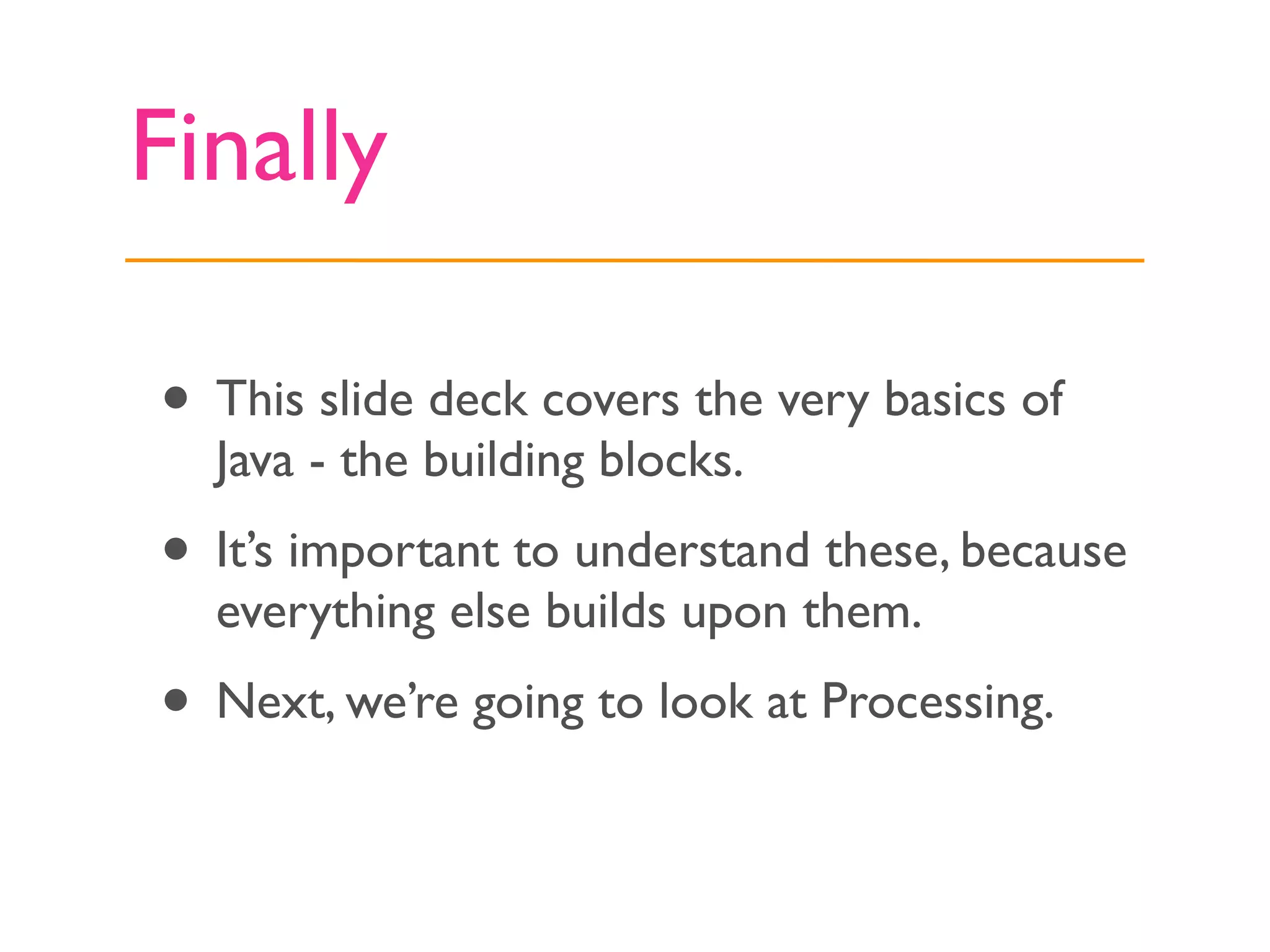The document serves as an introductory guide to Java, covering fundamental concepts such as object-oriented programming, the Eclipse IDE, and writing a simple 'Hello World' program. It explains primitive types, strings, conditions, and loops in Java, emphasizing how to declare variables and write clear, tidy code. Understanding these basics is essential for progressing to more complex topics in Java programming.
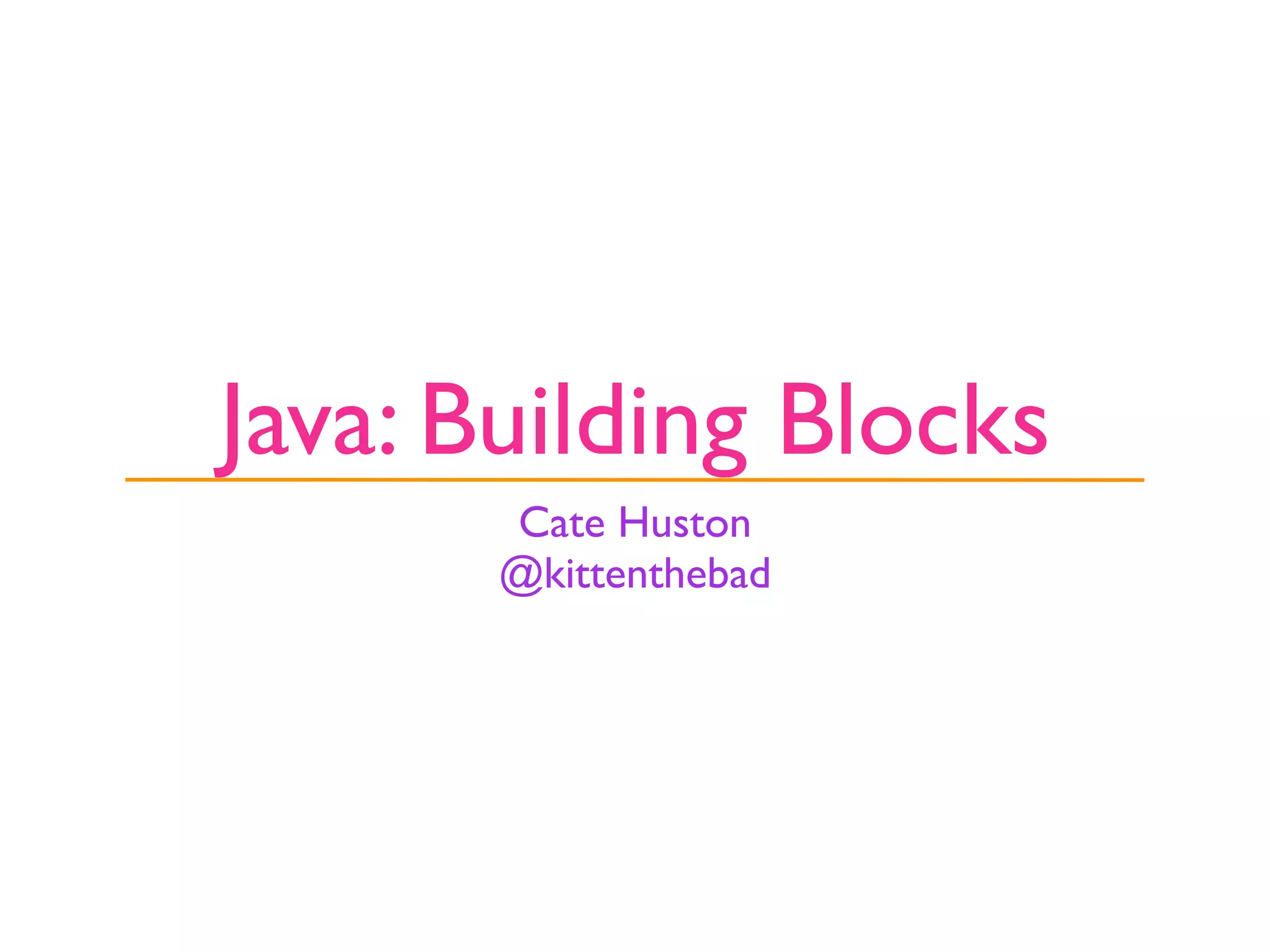
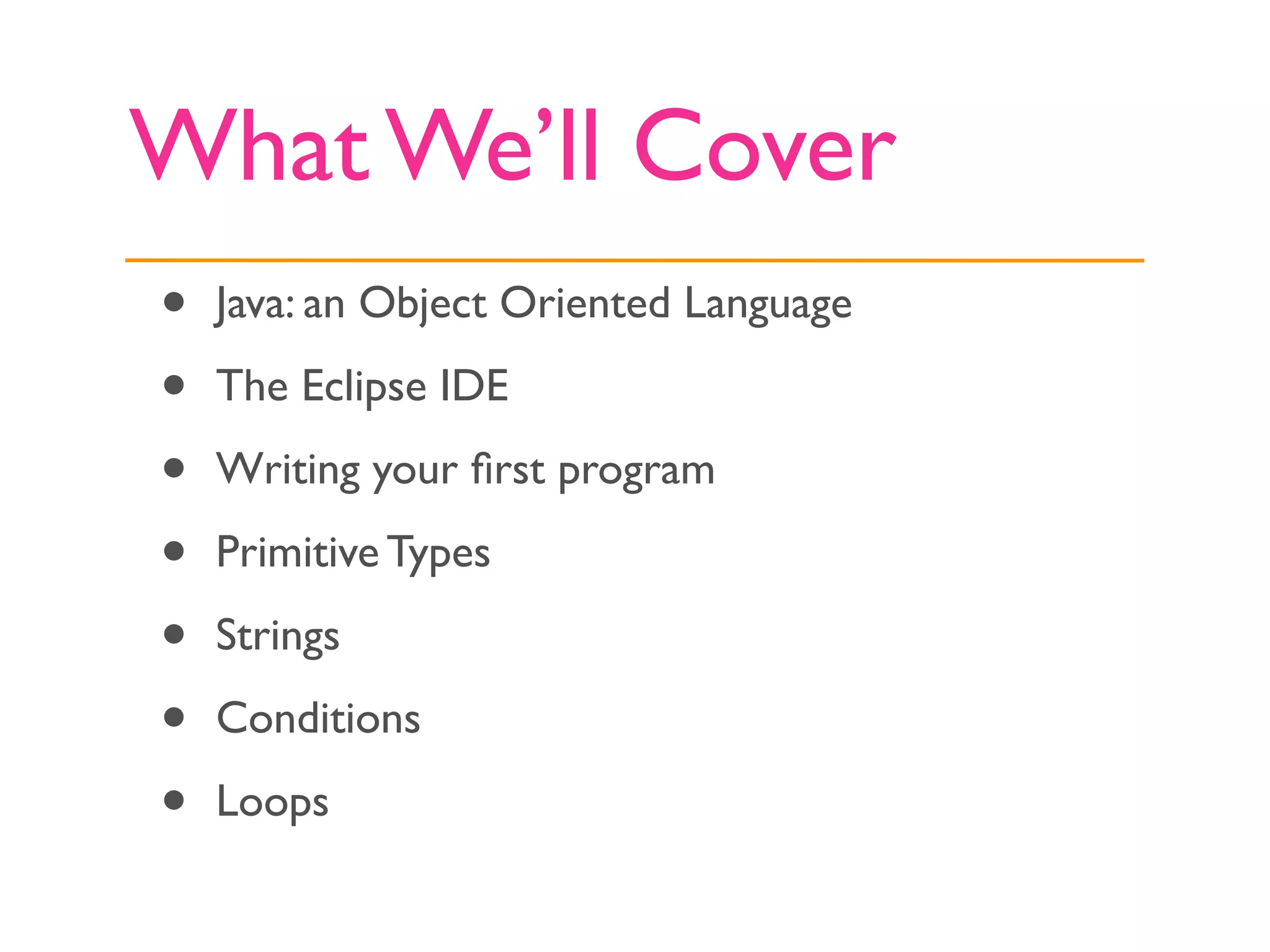
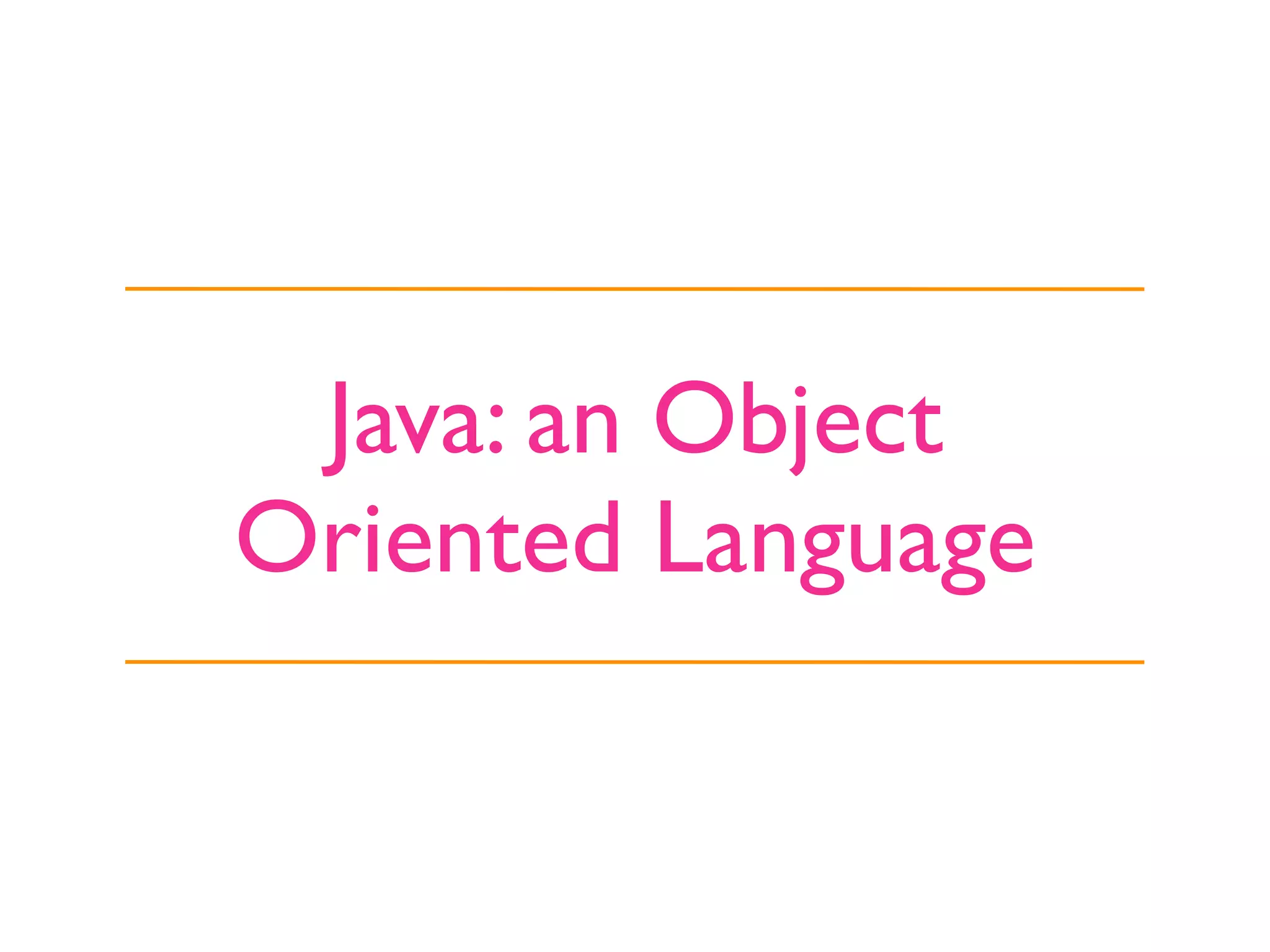
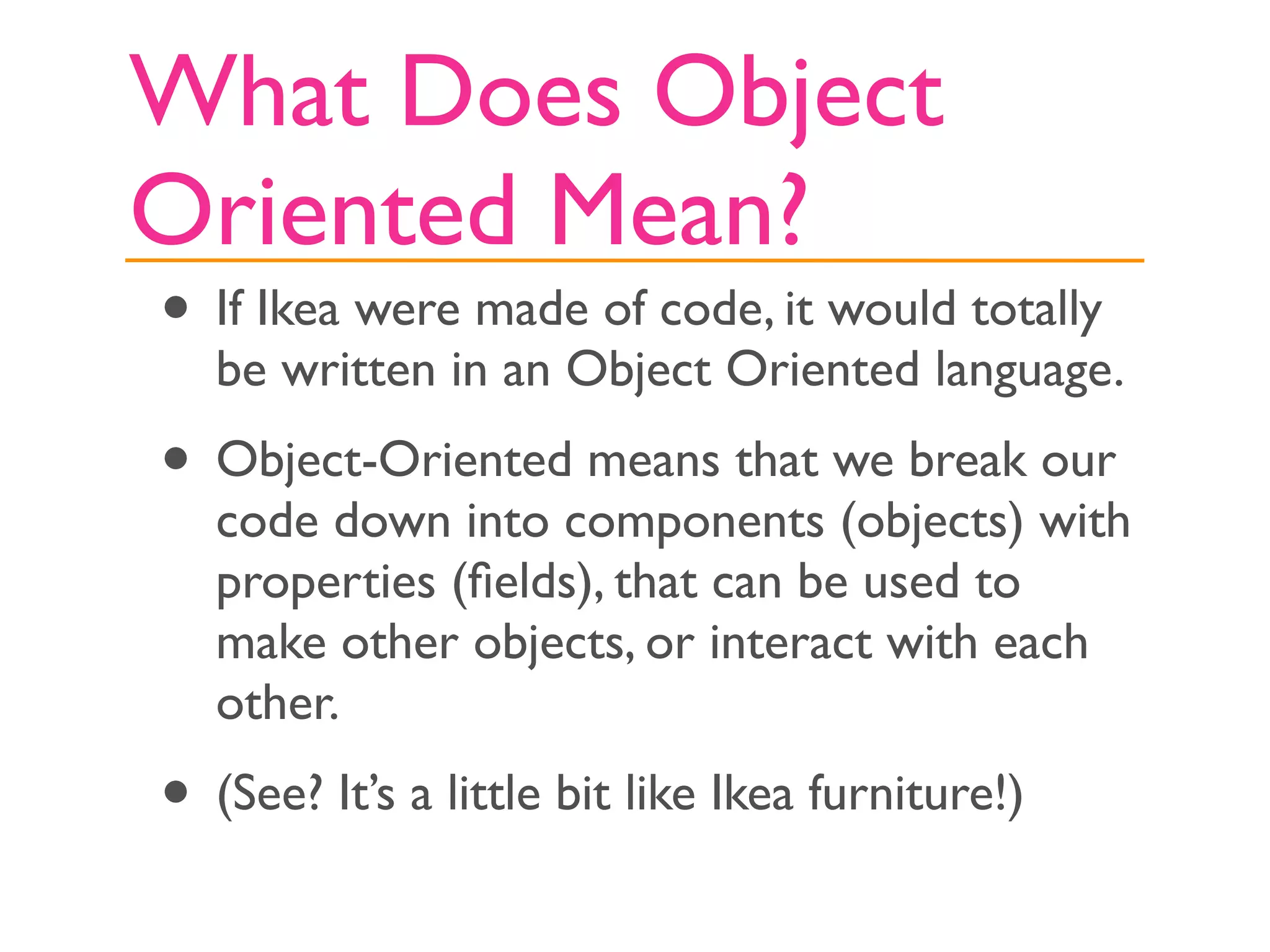
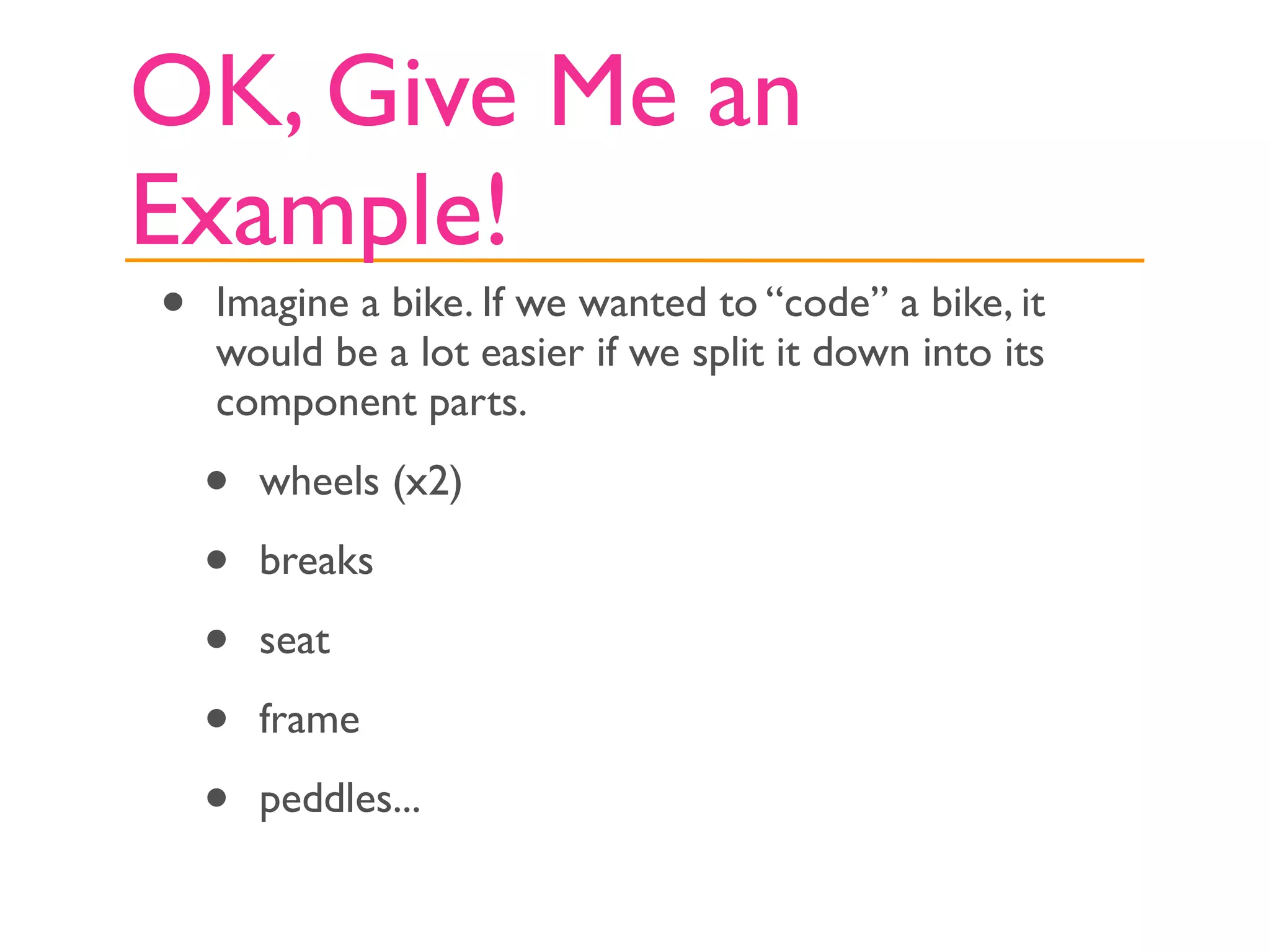
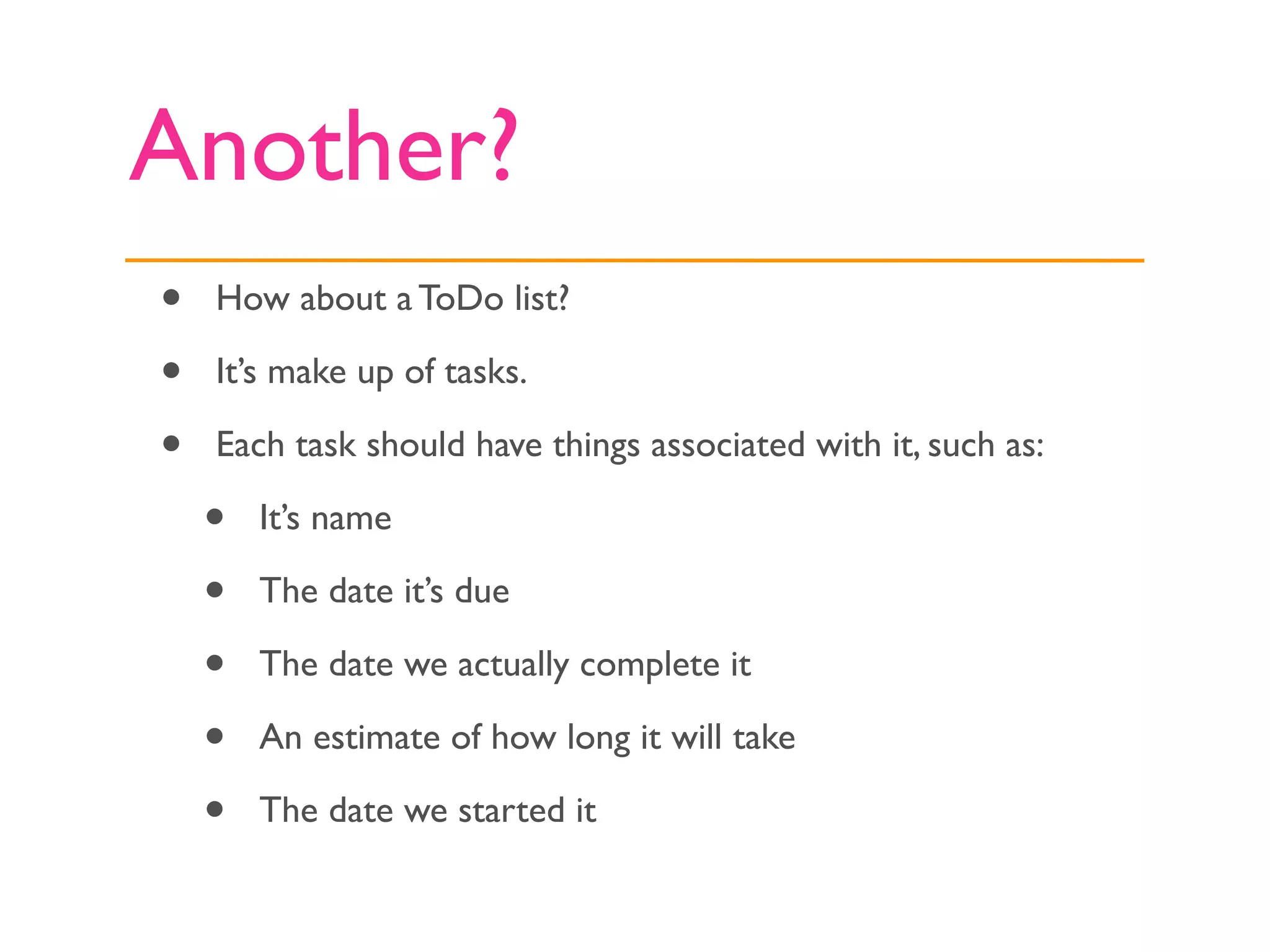
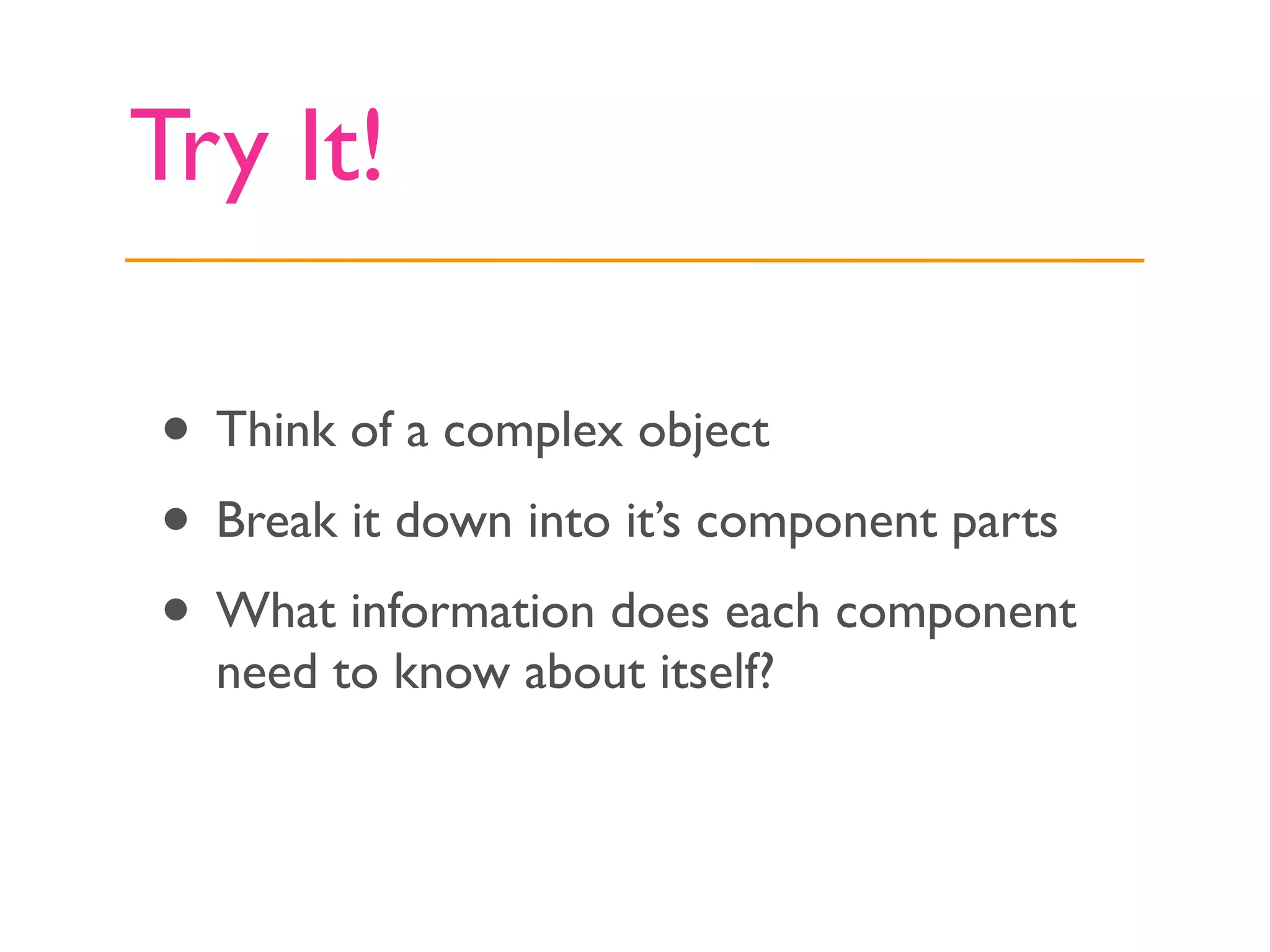

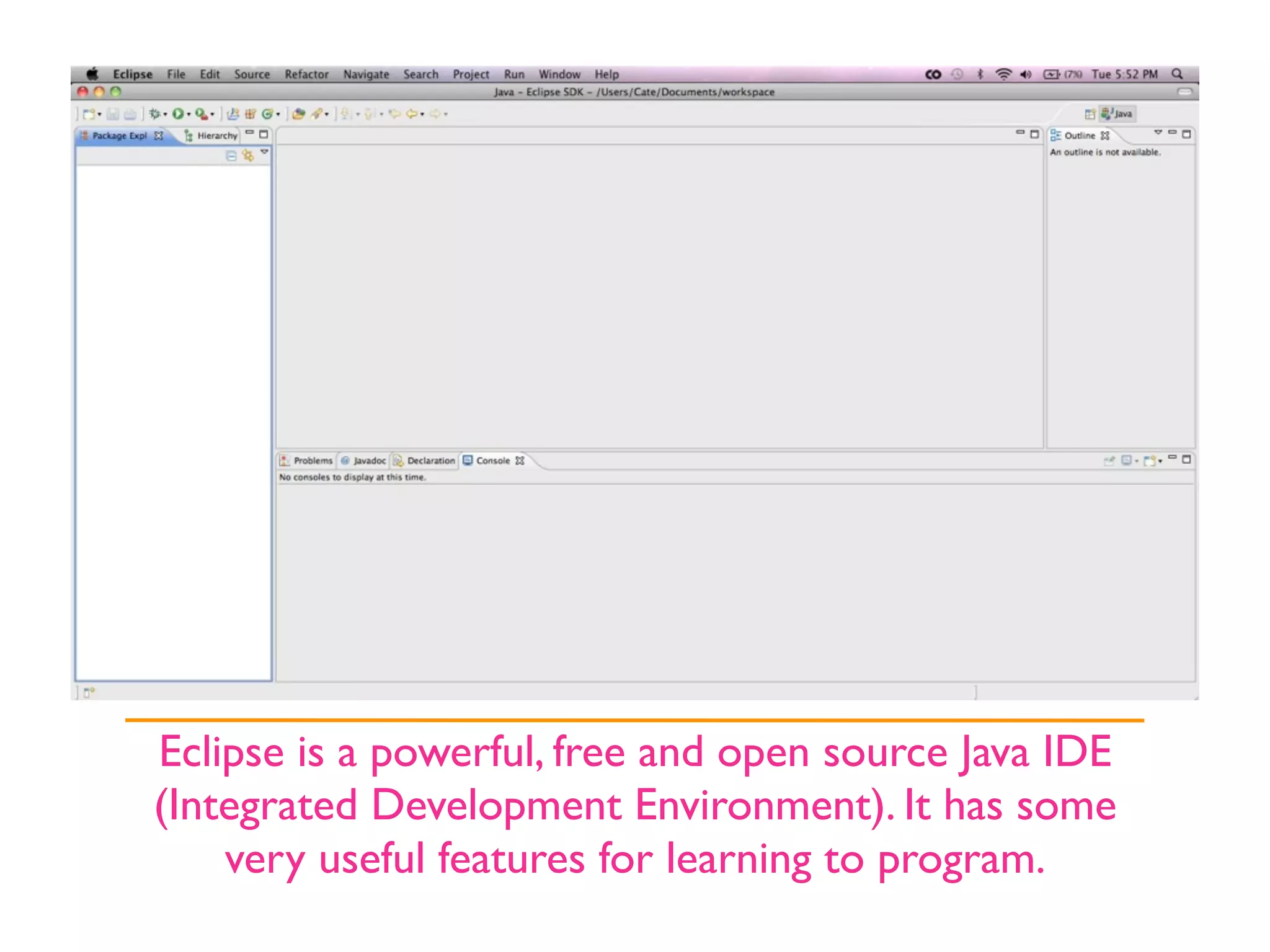
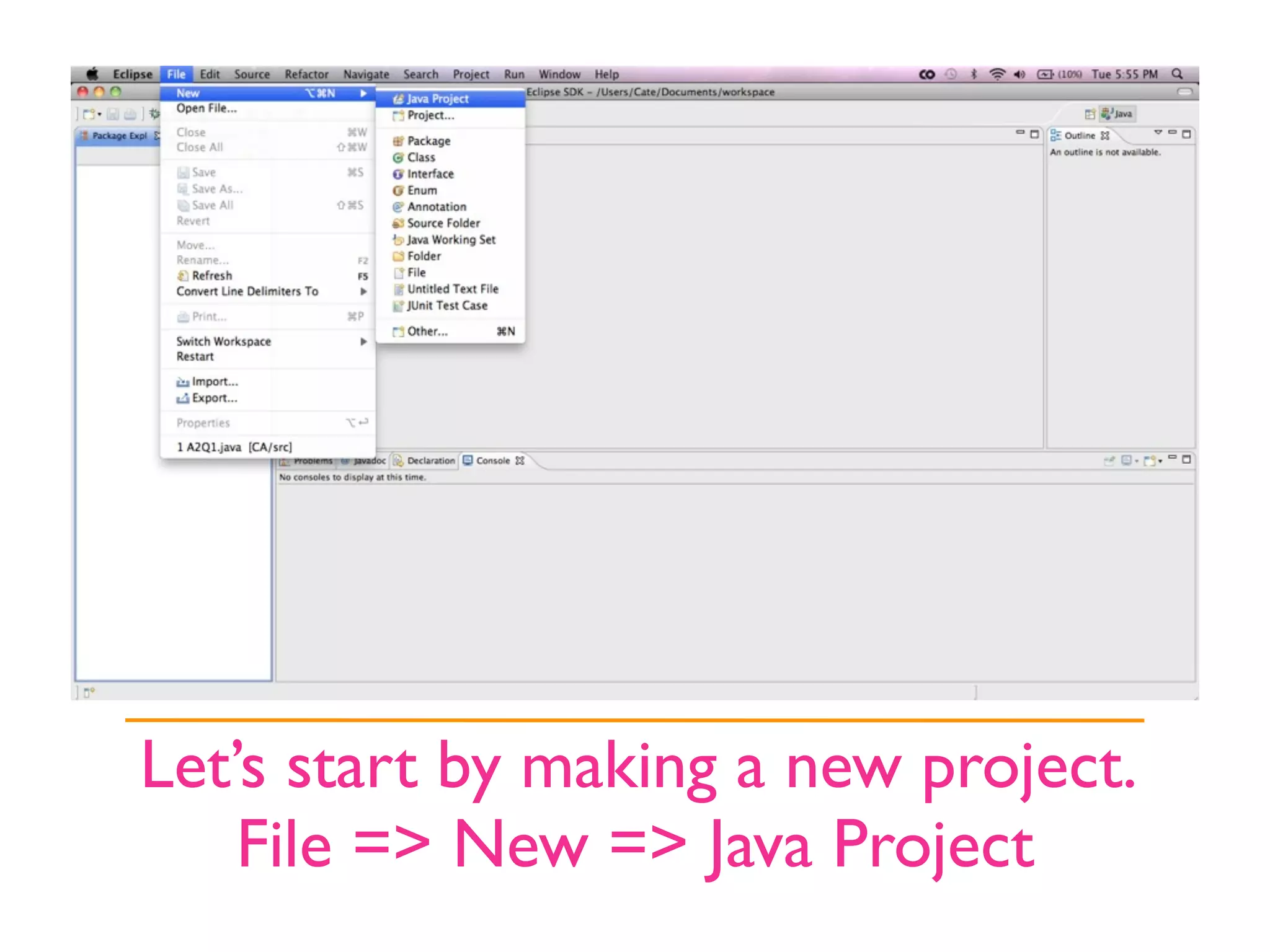
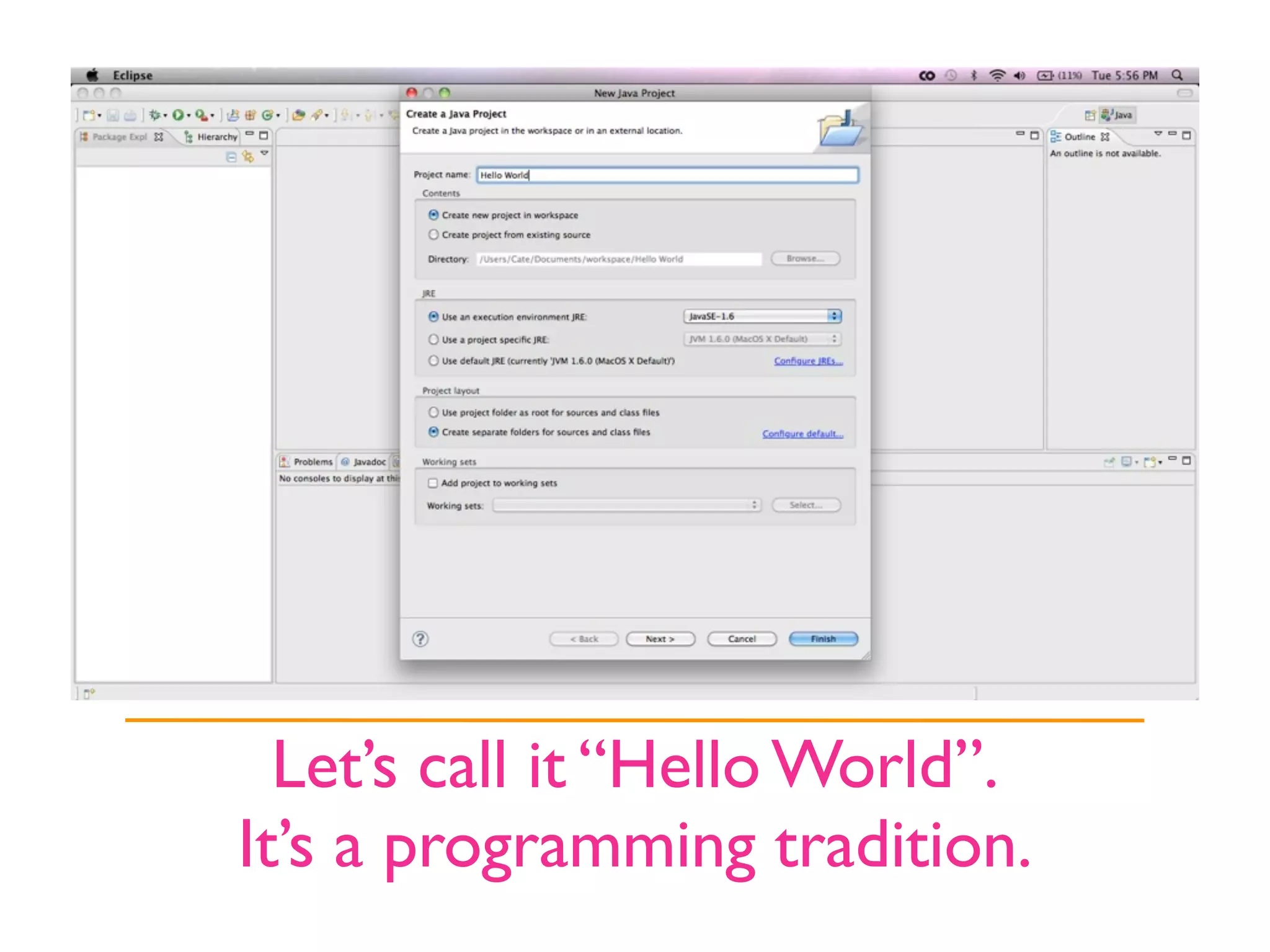
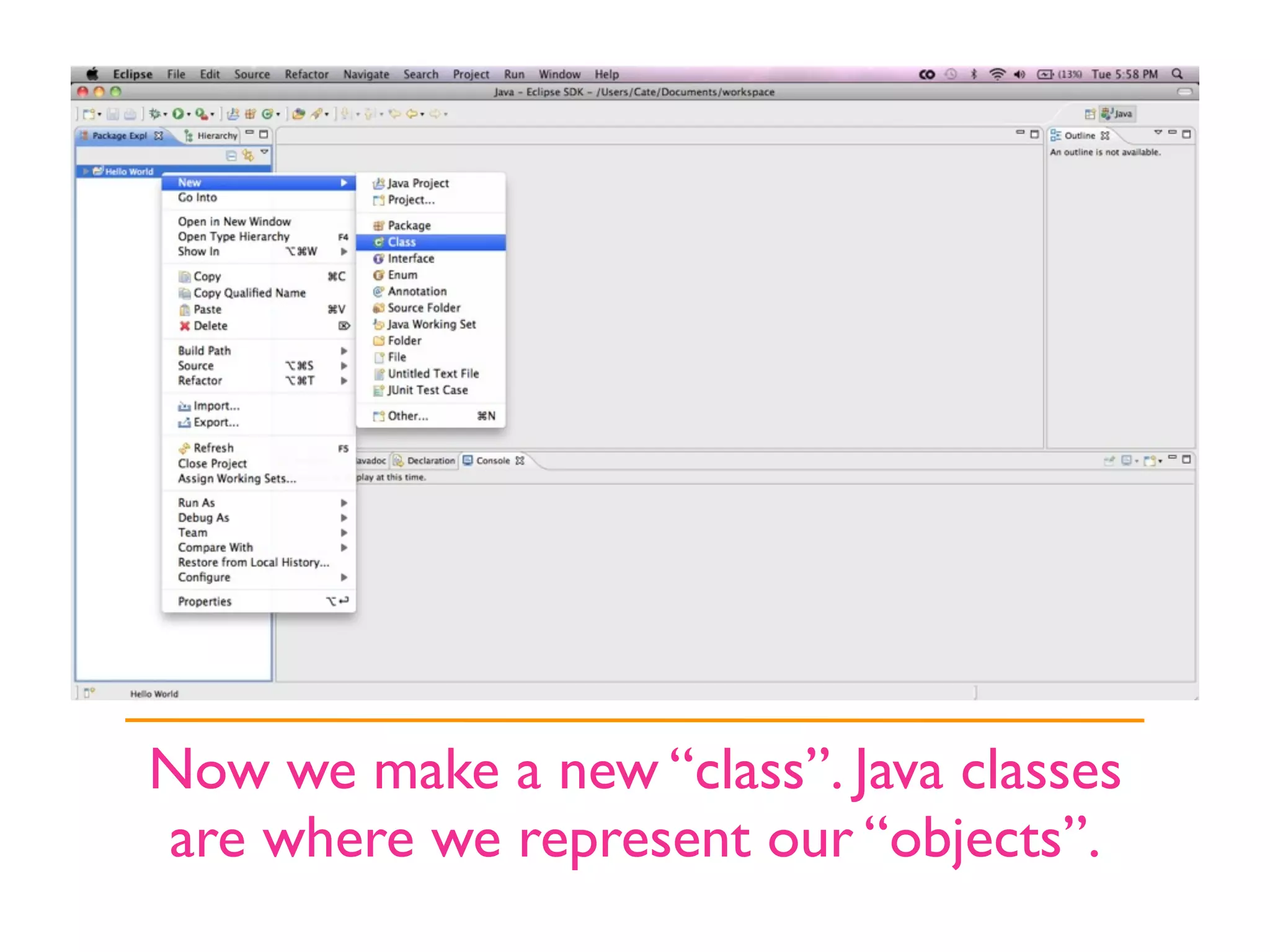
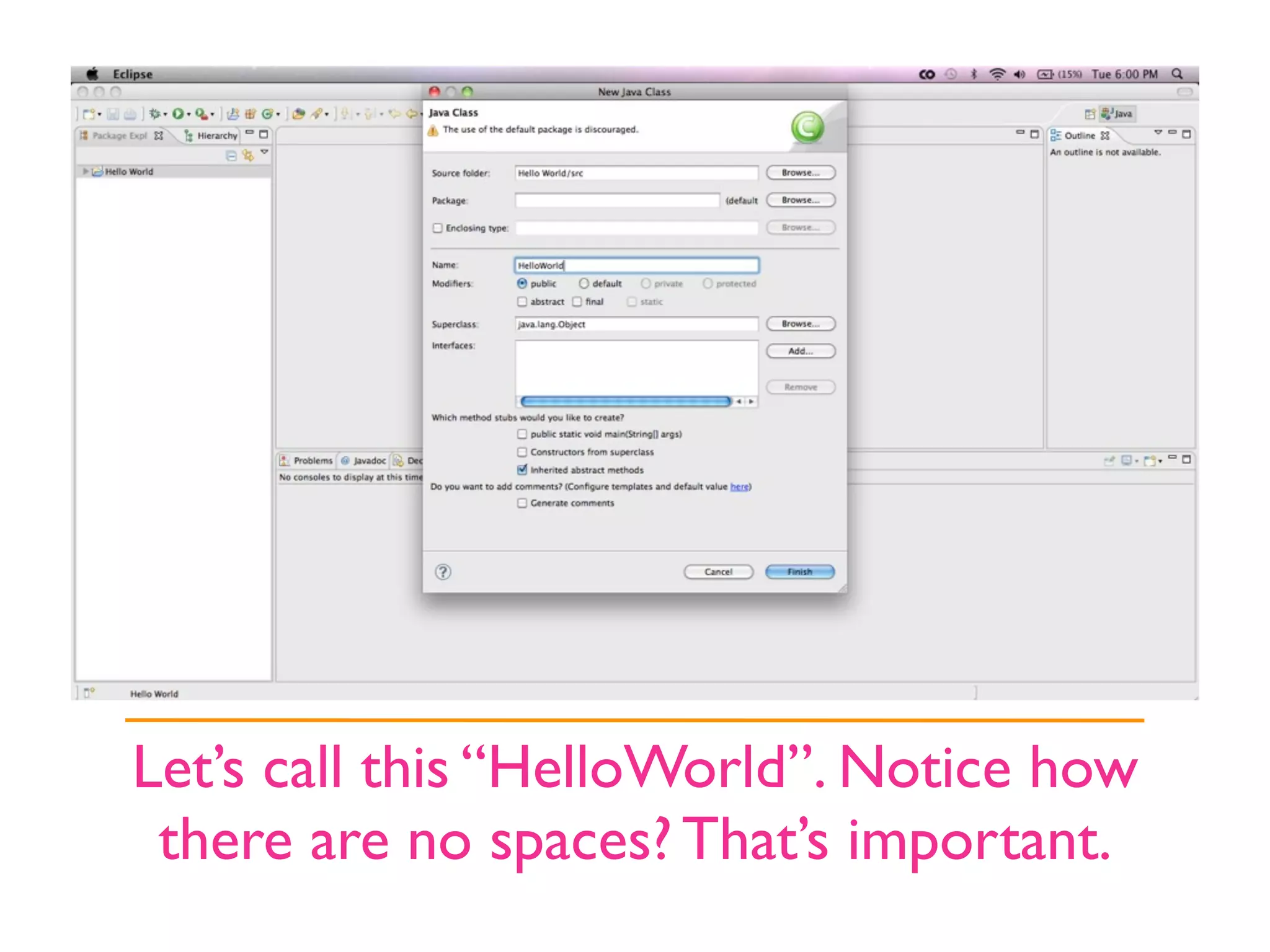
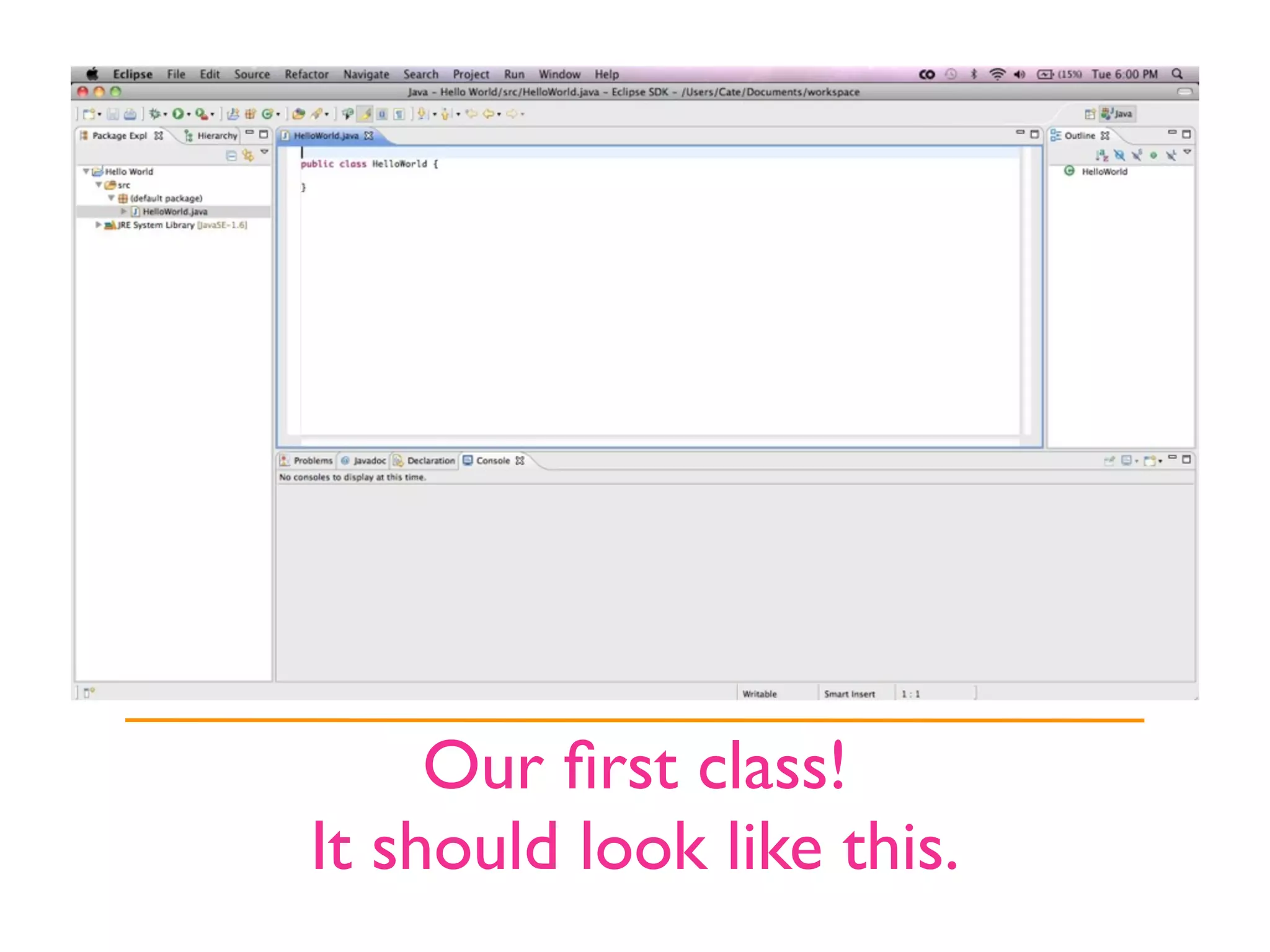

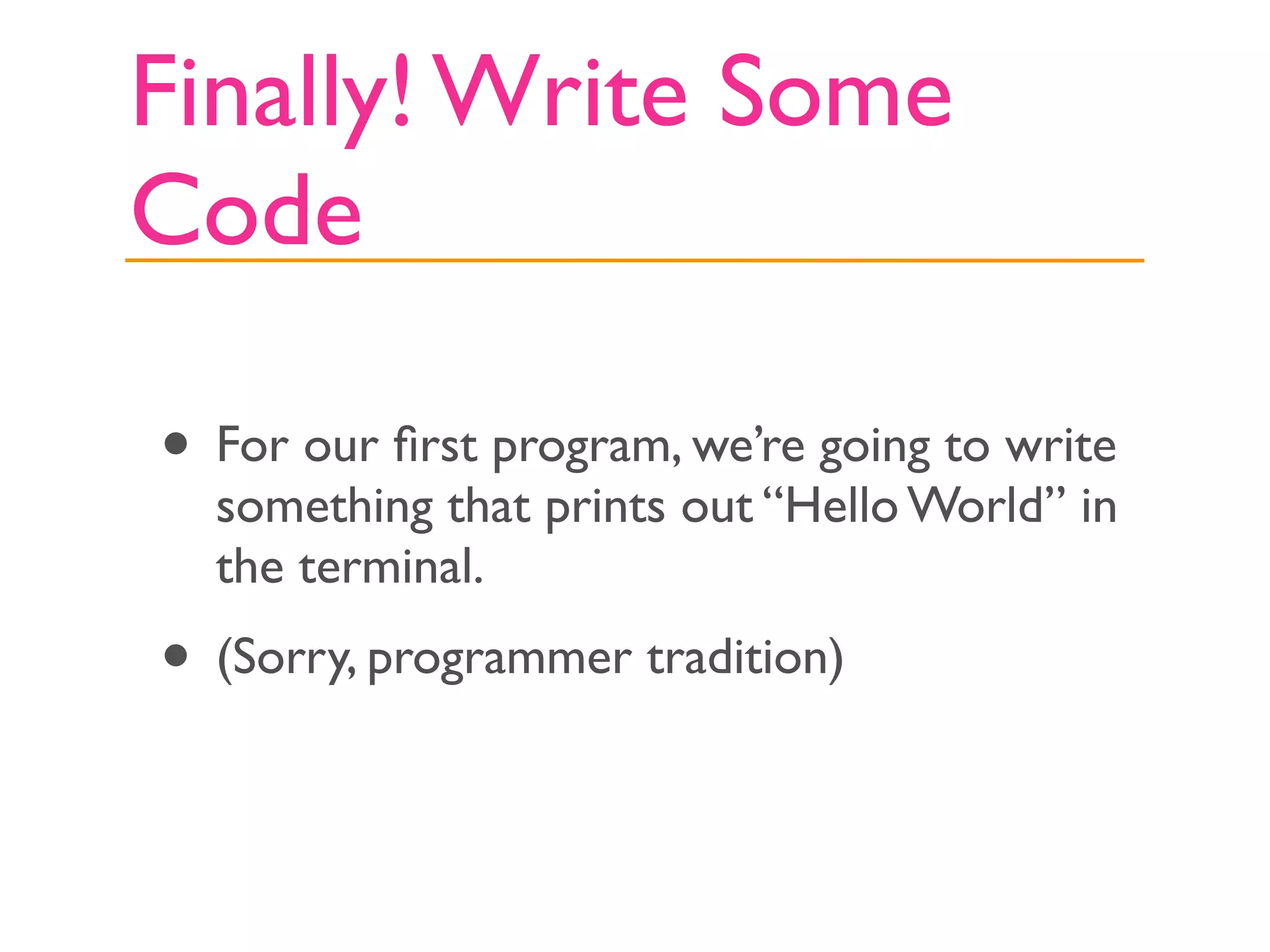
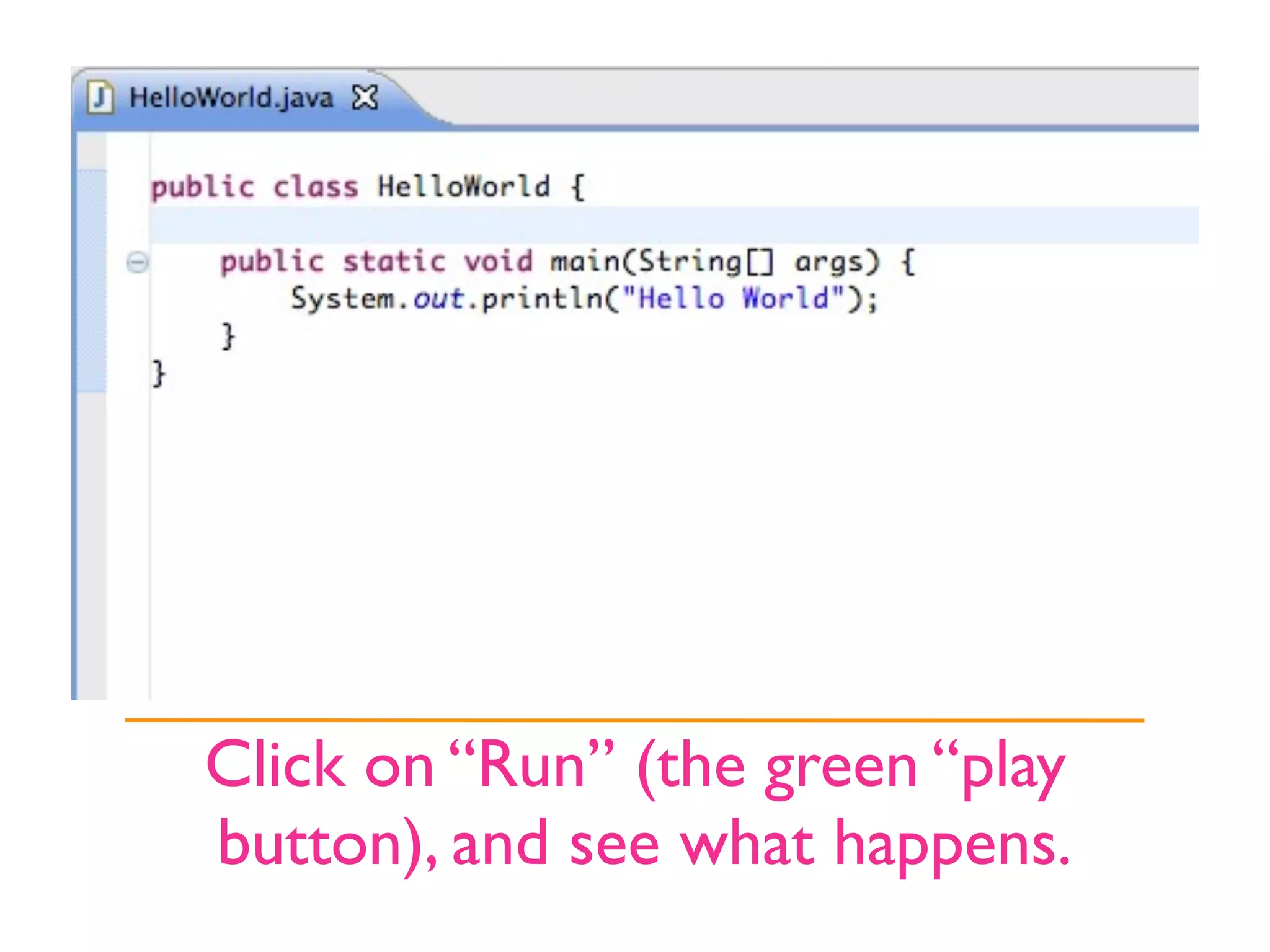
![What Does It All Mean?
• public class HelloWorld {
• Declares our class/object with name “HelloWorld”. Everything inside the “{“ is part of the
class. Public is to do with it’s visibility (don’t worry about that for now).
•
public static void main(String[] args) {
• This is our “main” method, what’s called when we click “run”. The String[] args means
we can pass arguments to it, if we want to. Everything inside the “{“ is part of the main
method.
•
System.out.println("Hello World");
• This means - print out “Hello World” to the terminal. The “;” is important, it denotes the
end of the line of code. We’re going to be using a lot of these.
•
} }
• The first closing bracket denotes the end of the “main” method, the second the end of the
HelloWorld class.](https://image.slidesharecdn.com/javabuildingblocks-091117194850-phpapp02/75/Java-Building-Blocks-18-2048.jpg)
